 (Ref. 621)
(Ref. 621)Chapter 7
Daughter ~ Mary (Polly) Todd Ware
After the birth of James III in 1771, it was not long before James and Caty added another child to their growing family. In September 1772, Caty gave birth to their first daughter. (Ref. 1070) They named her Mary Todd Ware, but she was always known by the nickname of Polly. Her middle name of “Todd” was most likely bestowed in honor of both Caty’s maiden name and also the maiden name of Polly’s paternal grandmother, Agnes Todd Ware. Caty must have had her hands full with the new baby, three-year old Thompson, and one-year old James.
Ware
Family Bible
 (Ref. 621)
(Ref. 621)

Polly, like her siblings, grew up in Virginia. It was there she met and married Charles Webb on February 24, 1791, thus providing the first bridge between the Ware and Webb families that would later move to Kentucky together. (Ref. 307, 621, 1067) Polly was only 19 years old at the time of her wedding and Charles was 36.

Both pages from Ware Bible (Ref. 621)
Record of more family members of Charles Webb’s line
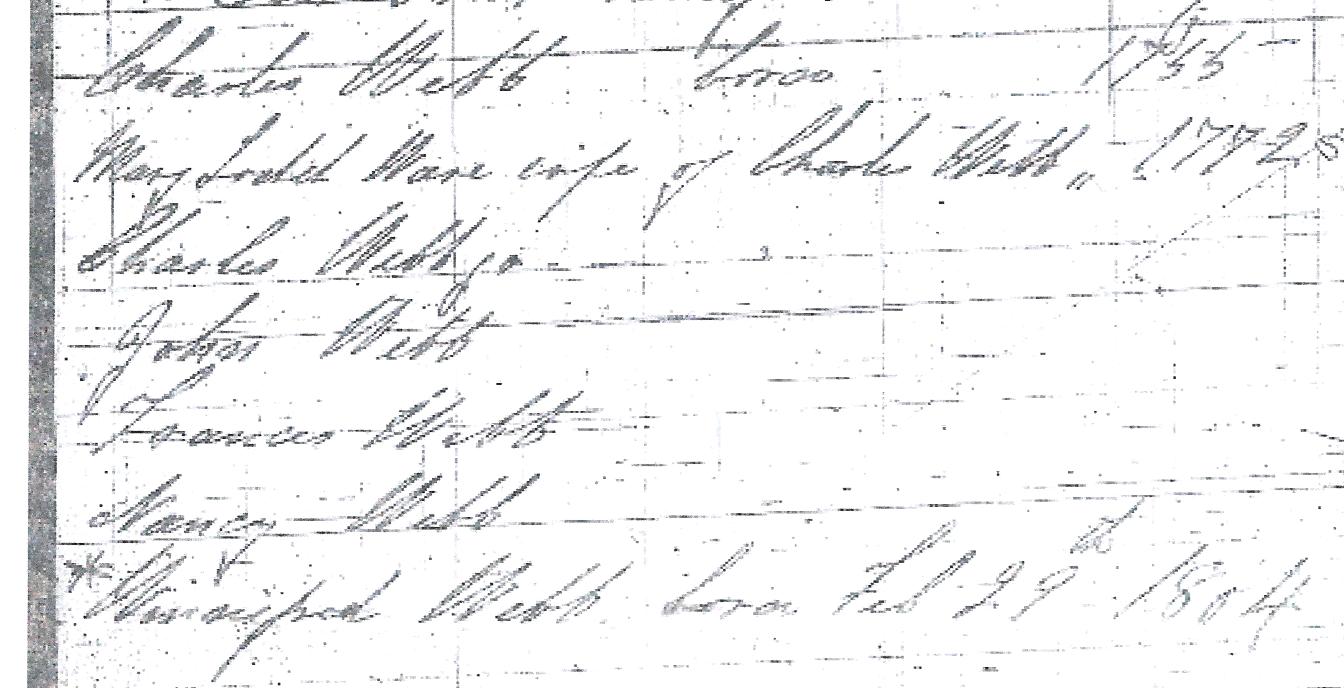 Ref.
621
Ref.
621
Charles Webb was the son of Isaac Webb, Sr., and his wife, Frances Barber Webb. Born in 1755, the “North Farnham Parish Register” lists the following siblings for Charles: John (1737); Giles (1741); James (1743); Cuthbert (1745); Frances (1747); Elizabeth (1749); Winny (1750); Nancy, who was called Ann (1753); Drucilla (1754); and Isaac (1758). The family bible also mentions another Isaac Ware, born in 1739, but since his name does not appear in the church register and the parents named a later child the same name, one would assume he did not survive infancy. (Ref. Sandra Walker)
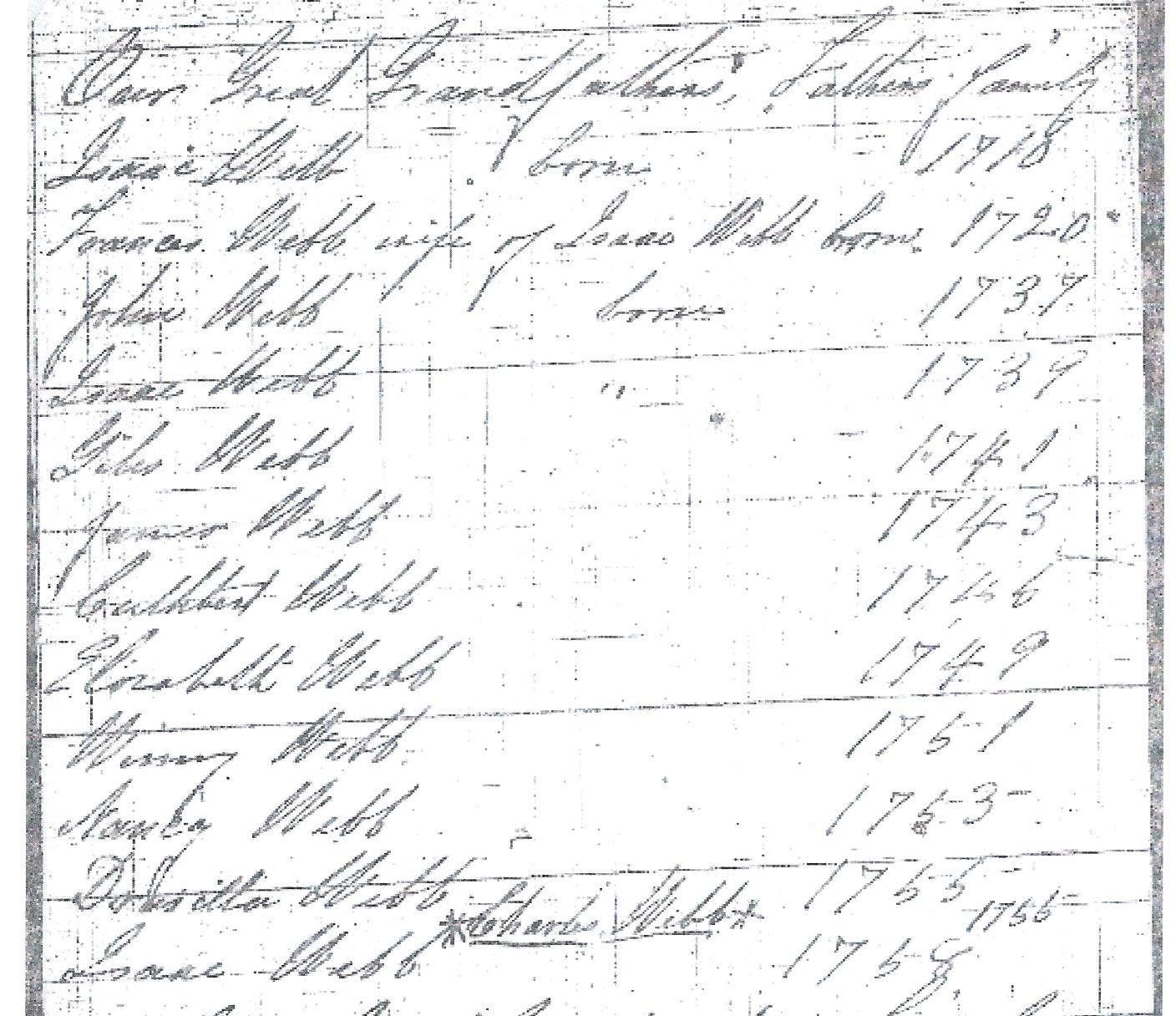 Ware/Webb Bible
Ware/Webb Bible
showing all the siblings for Charles Webb
Charles fought in the Revolutionary War and, along with his younger brother, Isaac, received land bounties in Kentucky for his service. (DAR Records, Vol.64) It was not long after their marriage that he and Polly joined the rest of the family for the big migration to their new home. Polly had already delivered her first baby in Virginia, and the harsh traveling conditions must have been very difficult on the new mother and child. As mentioned previously, records on file in the Rutherford B. Hayes Library state that “Mrs. Nancy Innis, the oldest living representation of the family in this part of the state tells me that she often heard her mother, Mrs. Charles Webb, say that her oldest child [Fanny] (born Dec. 1791) was but three months old when they came to Kentucky.” (Ref. 174)
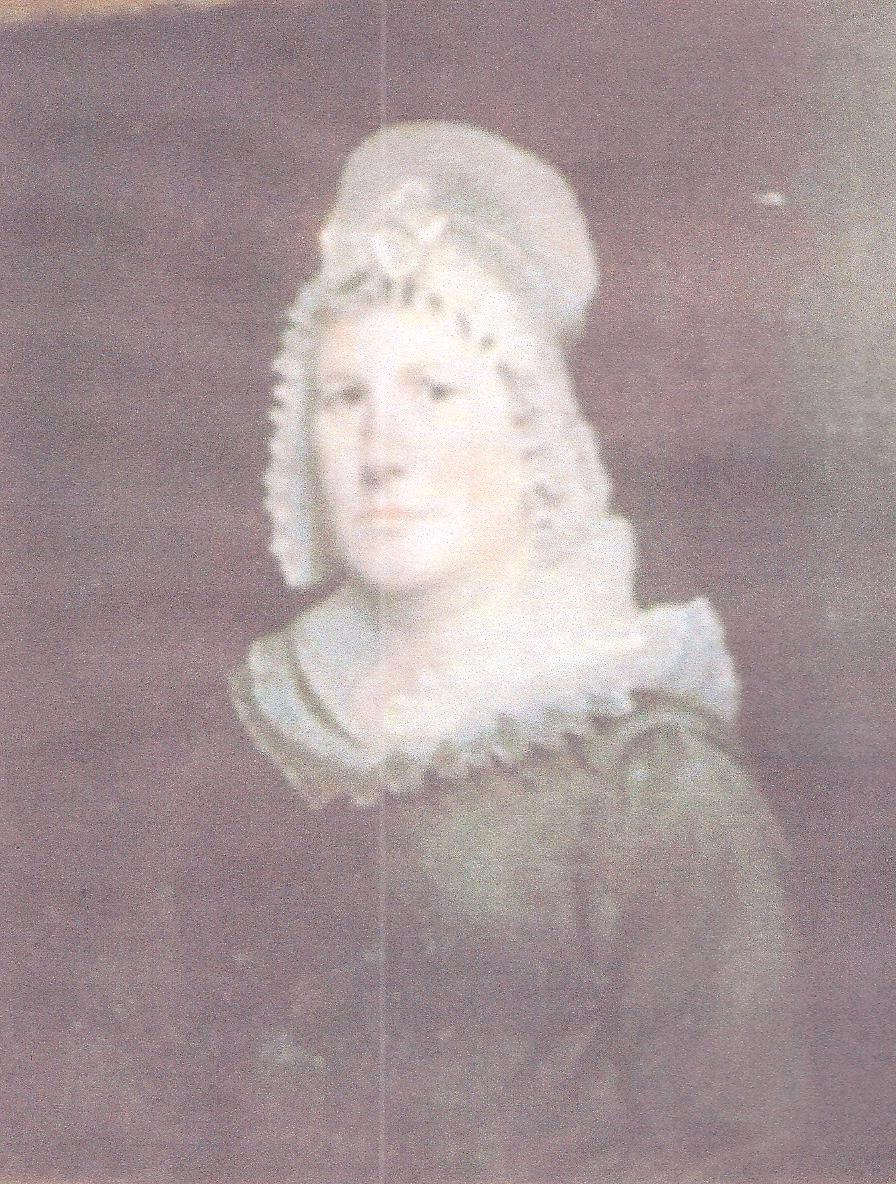
Mary (Polly) Todd Ware Webb Courtesy of Sandra Walker
That first baby Polly delivered, born on December 20, 1791, was a little girl named Frances, but everyone called her Fanny. Just three days shy of her 17th birthday, Fanny married William Conn on December 17, 1808, in Fayette County, Kentucky. (Ref. 941) William, the brother of Polly’s sister-in-law, Sallie Conn Ware (wife of Thompson), was the son of Thomas and Sarah Maddox Conn. Thomas was a wealthy man and had “received 2,196 acres on Elkhorn & Licking on January 4, 1783. Moving around 1787, [the family] settled on his tract which was located west of the present town of Centerville and built a large frame house.” (Ref. 951) According to an 1818 deposition in ‘Conn vs. Gaines & Menifee’ located in the Fayette County, Kentucky Record Book E on page 221, the date that Thomas Conn settled on his land is more accurately documented as 1784. He “continued to reside on it until his death which took place in February 1811.” After his death, Thomas’s holdings were divided among his children. His son, William, owned “a good farm, a part of the same survey extending up to the village, and he also purchased the farm from his brother, James, who inherited the old homestead.” (Ref. 781)
William and Fanny’s home, which they named Bellevue, was immediately north of where her Uncle Thompson and Aunt Sallie Conn Ware lived. In a letter that Charles Ware wrote his brother in 1811, he mentioned that “William Conn has settled between Thompson Ware’s and his father. [He] has built a brick house and cleared about 20 acres of land and put it in corn and hemp.” (Ref. 35B) The records show that “all this land was around the headwaters of Townsend.” (Ref. 781)
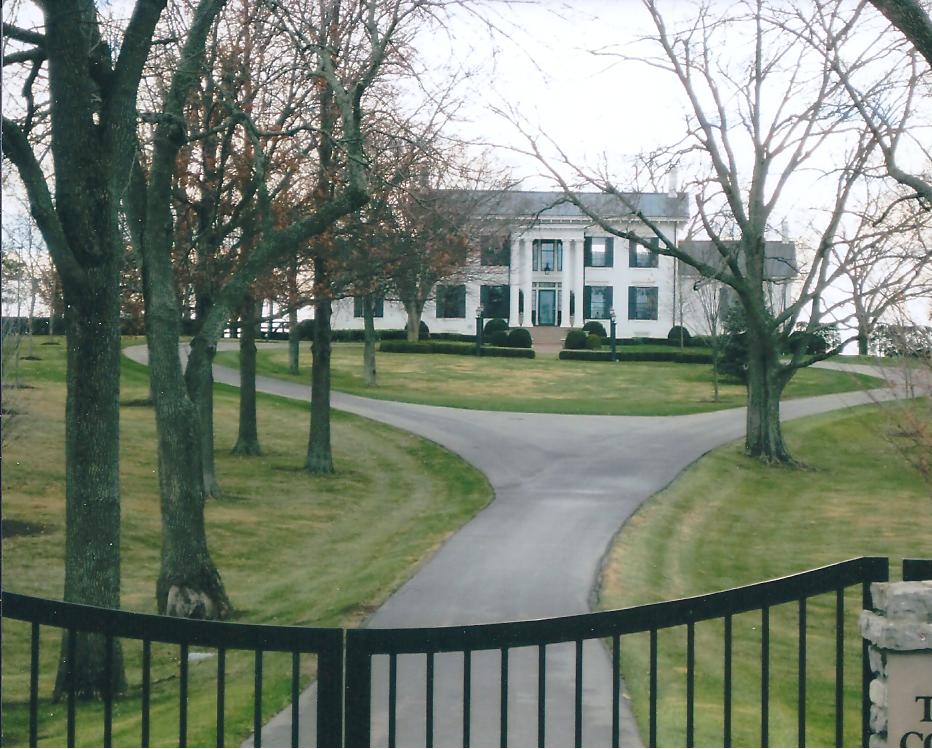
Bellevue – home of William Conn
Photo taken by James and Judy Ware 2010
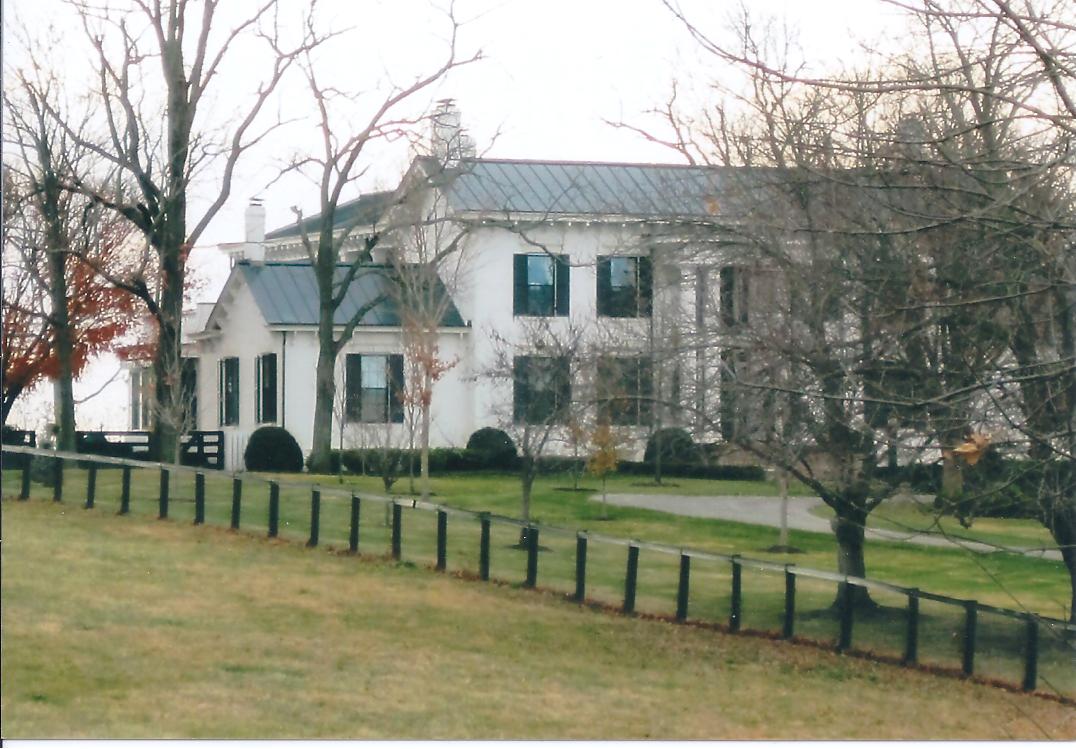
Bellevue – home of William Conn (and later John and Catherine Gano)
All current photos taken by James & Judy Ware 2010


Bellevue

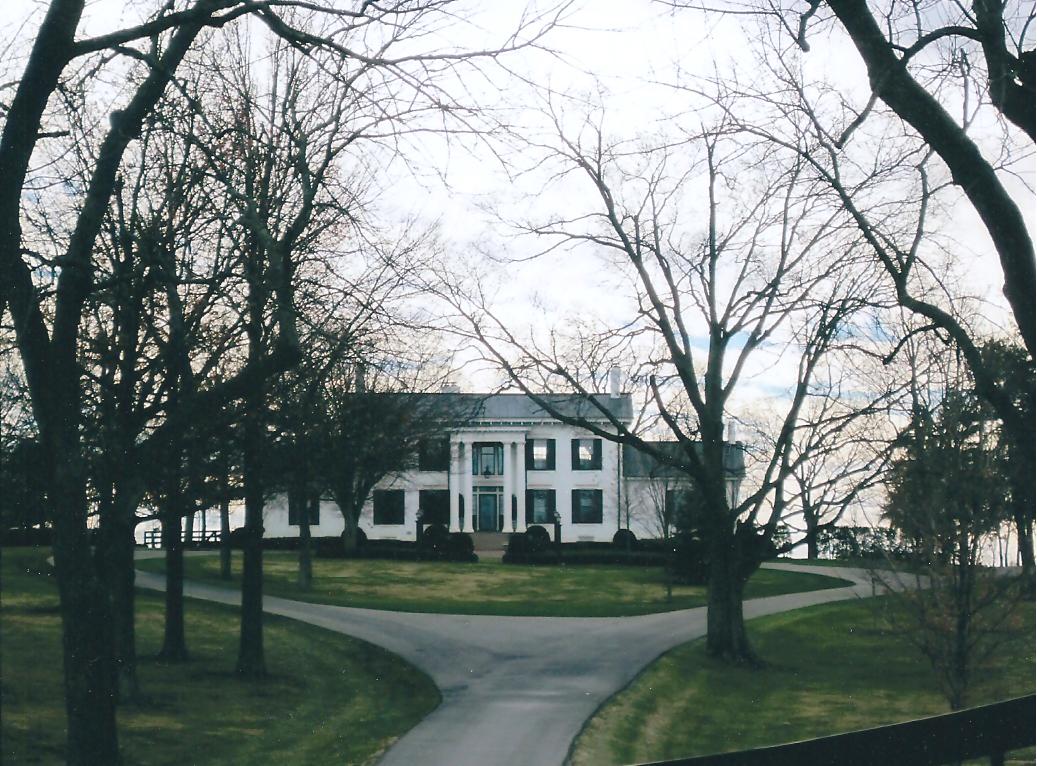 Bellevue
Bellevue
The following information concerning the property is from a book entitled, Historic Architecture of Bourbon County, Kentucky:
“Set above a sweeping drive near the intersection of the Georgetown and Russell Cave Roads at Centerville, this impressive two-story brick house with a recent two-story entrance portico probably incorporates an earlier dwelling. It is possible that the small one-story section at the left end of the front block dates to the first decade of the 19th century.” (Ref. 2290) William built the home just prior to his marriage to Fanny Webb. “At least part of this dwelling may correspond to the structure built in 1804 or 1805 for Capt. William Conn, a veteran of the War of 1812.” (Ref. 2290)
William and Fanny Conn only had one child together before the untimely death of Fanny at a young age. Their little daughter
Fanny Webb Conn
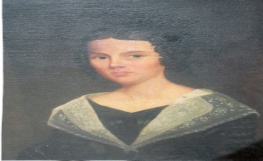
was born on September 8, 1810, and her parents named her Mary Catherine, although she usually went by the name Catherine. When the young girl was only two years old, her father volunteered to fight in the War of 1812. William attained the rank of captain and “was in the Kentucky Mounted Volunteer Militia from August 31, 1813 to November 8, 1813 under command of Colonel William Mountjoy.” (Ref. 1055)

![]() War record
(Ref. 2289)
War record
(Ref. 2289)
When Fanny Conn died, she left a young daughter, a grief-stricken husband, and a bereft mother behind. Polly Webb was quoted by her sister as saying, “with tears in her eyes, Oh, if he {Dr. Scott} could have only seen Fanny, I think she would have got well.” (Ref. 597) Polly’s sorrow must have been intensified by the fact that she was already a widow at the time of her daughter’s death. Her husband, Charles, had passed away in 1806.
William Conn never remarried and Catherine (Polly’s granddaughter) was doted on by her widowed father. When she married a Unitarian minister named John Allen Gano on October 2, 1827, William gave the newlyweds a farm near his own, “where his father, Thomas Conn, settled in 1787, where he lived and died in 1811.” (Ref. 782, 951) This was most likely a home known locally as “Springdale.” Reverend John and Catherine Gano actually occupied three different houses on the Conn property, all stemming from the original land acquisition of patriarch, Thomas Conn.
John and Catherine’s first child, William Conn Gano, was born at Bellevue, his grandfather’s home, in 1828. The family then moved to Springdale (a wedding gift from William Conn) where all the other children were born: Richard in 1830, Fanny in 1832, Robert in 1834, Stephen in 1836, Franklin in 1839, Eliza in 1841, John Allen in 1845, and Mary Eliza in 1848. (Ref. 2255)
Meanwhile, William Conn’s brother, John, had been living for over 30 years at Rural Glen, across the Georgetown Pike from William Conn's Bellevue, and adjoining Thomas Conn's (then Reverend John A. Gano's) Springdale. According to author Walter Langsam, “a one-story brick quarters and another old outbuilding are near the house [Rural Glen]. It appears that this was the homestead [Springdale] of Capt. Thomas Conn who came to Bourbon County in 1790 from Virginia, locating here on 2000 acres at the headwaters of Townsend Creek.” (Ref. 2290) It is not clear if the brick house of Rural Glen was actually built for Thomas or his son, but John Conn was the one who inherited it. Then, when John died in 1849, the Gano family became the new occupants. They simply moved one farm over from Springdale to Rural Glen. “Gano had the house greatly enlarged about 1850 to accommodate his large family.” (Ref. 2290)
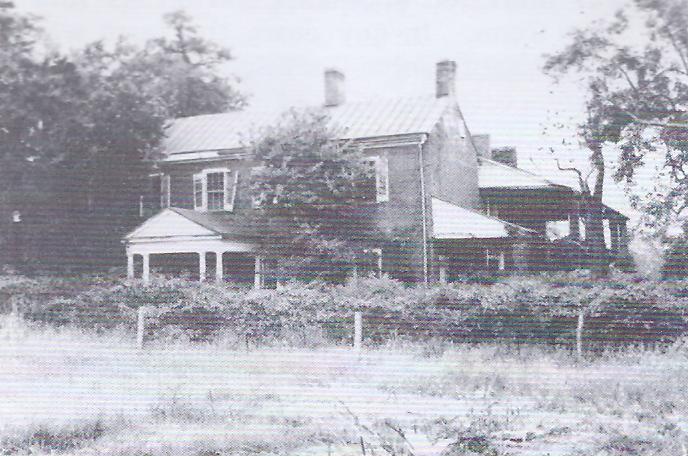 Rural
Glen (Ref. 2290)
Rural
Glen (Ref. 2290)
When William Conn died at Bellevue in 1872, he bequeathed Bellevue to his only daughter, so John and Catherine Gano then moved back to that house. (Ref. 941) “About 1895 this property along with the Springdale and Rural Glen farms on the north side of Georgetown road was purchased by Voleny W. Ferguson.” (Ref. 2290)
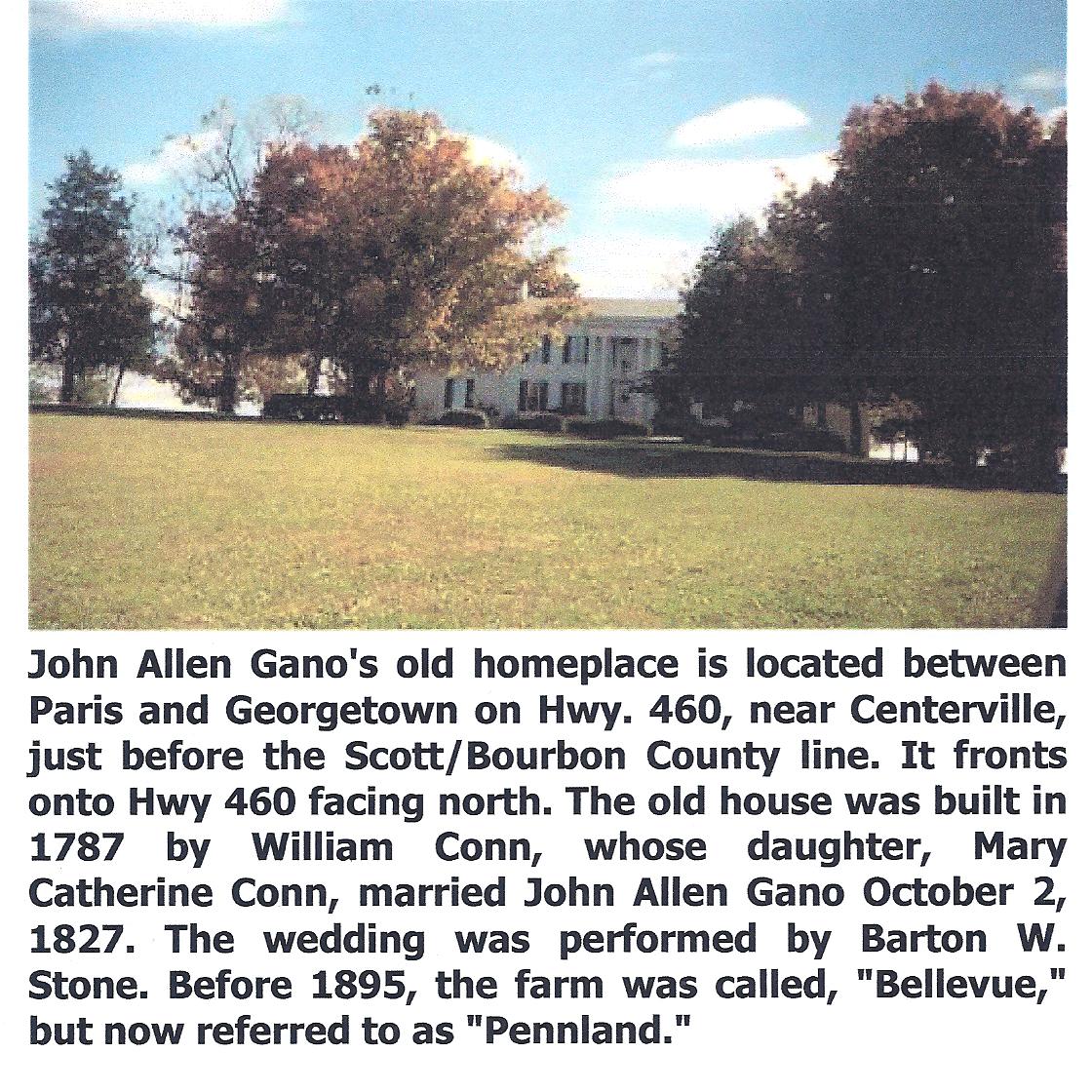 Bellevue
In a letter from Lucy Webb prior to 1830, she wrote, “Your
Uncle Thompson Ware (and all his family), and your Aunt Webb, Winny
Williams, Catharine Gano [Fanny’s daughter]
are all Unitarians. Mr. Gano is a Unitarian preacher – no great
thing. He’s a smart man enough if he would let preaching alone.
Catherine has a son – calls him William Conn (after her father).
If her mother [Fanny]
had lived, she would have never married Gano; her Grandmama [Mary
Polly Todd Ware] very much opposed to it, but
likes him very well now. He is a sickly man, worth nothing, but her
father [William Conn]
has bought James Conn’s place adjoining him. They live there (if
he ever pays for it) though the payments are quite easy.”
(Ref. 597)
Bellevue
In a letter from Lucy Webb prior to 1830, she wrote, “Your
Uncle Thompson Ware (and all his family), and your Aunt Webb, Winny
Williams, Catharine Gano [Fanny’s daughter]
are all Unitarians. Mr. Gano is a Unitarian preacher – no great
thing. He’s a smart man enough if he would let preaching alone.
Catherine has a son – calls him William Conn (after her father).
If her mother [Fanny]
had lived, she would have never married Gano; her Grandmama [Mary
Polly Todd Ware] very much opposed to it, but
likes him very well now. He is a sickly man, worth nothing, but her
father [William Conn]
has bought James Conn’s place adjoining him. They live there (if
he ever pays for it) though the payments are quite easy.”
(Ref. 597)
Lucy’s somewhat unflattering comments about John Gano probably stemmed from the sudden and intense religious changes that were occurring in Kentucky at the time. “During the colonial period, the Episcopal church had been the official church of the colony of Virginia. At first no other denominations were permitted, but in time a measure of tolerance was exercised and dissenting churches were permitted to hold services. Nevertheless, members of all denominational affiliations were taxed for the support of the Anglican Church.” (Ref. 2265) Needless to say, this caused unhappiness among non-Anglicans. “The controversy developed along the denomination lines, with the Presbyterians and Baptists in the forefront of the dissenter’s ranks.” (Ref. 2265)
When the Wares settled in Kentucky, most of the family members joined different Baptist churches. “Westerners, for the most part, detested the English social and political systems which the Episcopal Church represented. It was partly this system of society which drove the Kentucky settlers out of the eastern seaboard colonies into the West.” (Ref. 2208) The newly settled frontier provided fertile ground for the quickly growing Baptist movement.
Around 1800, there was a “Great Revival which increased in intensity until an amazing climax was reached at Cane Ridge, near Paris, in the Bluegrass Region. It was estimated variously that from twenty to thirty thousand people assembled at the small log meetinghouse.” (Ref. 2265) It was an unbelievable mass of people who gathered to find their salvation, and “one of the more interesting aspects of the Great Revival as it spread across the south from 1801 to 1803 was the close cooperation between the Methodist, Baptist, and the Presbyterian teachers.” (Ref. 2265)
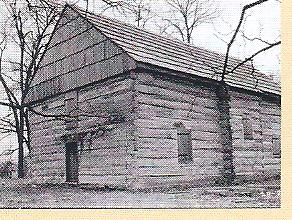 Original
Cane Ridge Meeting House
Original
Cane Ridge Meeting House
Provided courtesy of the Kentucky Historical Society

Cane Ridge Meeting House

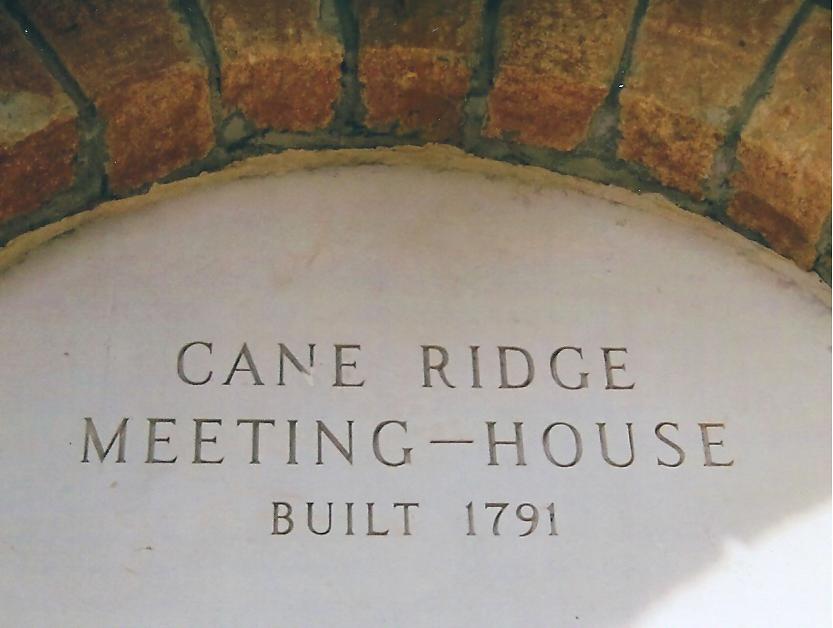
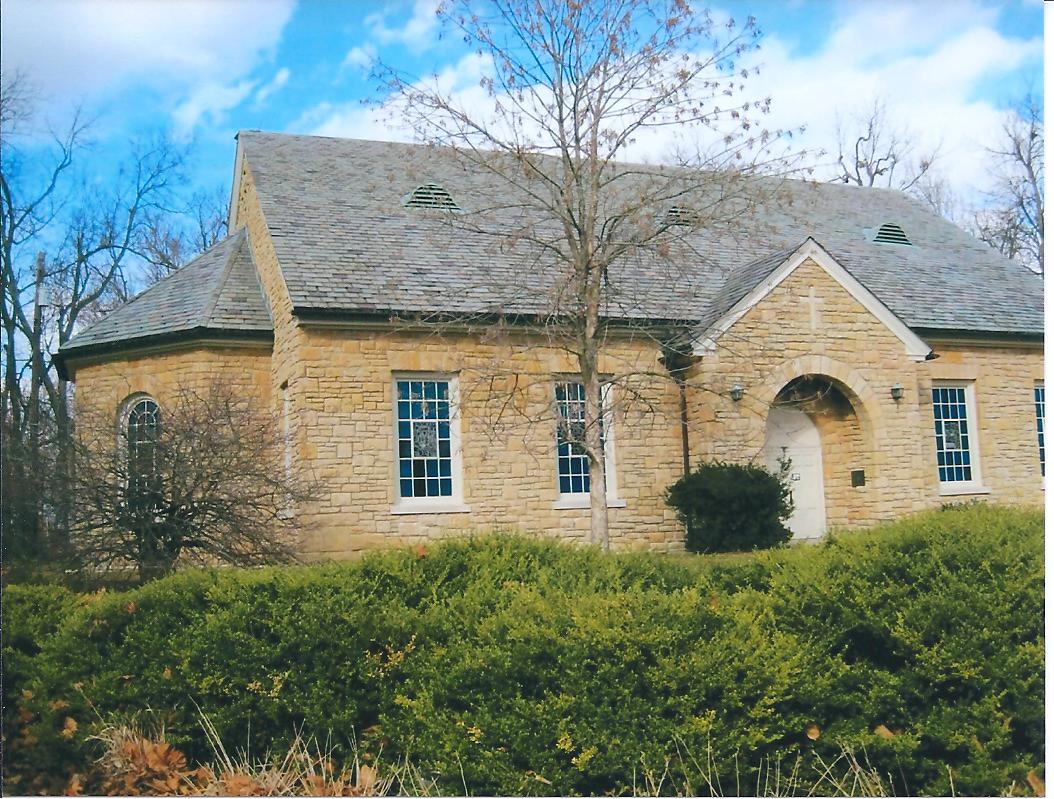 Photos courtesy of James &
Judy Ware 2010
Photos courtesy of James &
Judy Ware 2010
There is now a shrine built completely around the old log meeting house which is still intact
In time, however, as will happen, “feelings of resentment between the sects became apparent and soon several of the churches themselves became divided.” (Ref. 2265) In an effort to avoid infighting and hard feelings among the Christian neighbors, a new offshoot of the Baptist church was formed, called the Unitarian Church. Even the name they chose for themselves spoke of its goal; to “unify” Christians in their faith and stop the divisiveness that was splitting communities apart. The Unitarian church would eventually become known as the “Disciples of Christ,” a denomination founded on the core principle of tolerance.
As staunch Baptists, it would have been only natural to have a certain attitude of skepticism at the beginning, as Lucy and Polly obviously did. It is nice to know their opinion changed over time, and Polly actually joined the same church as her granddaughter. In September 1827, “during that meeting he immersed Mrs. George W. Williams and her mother, Mrs. Mary Todd Webb.” (Ref. 2255)
Catherine’s husband, Reverend John Allen Gano, came from a long line of ministers. “His grandfather was a Baptist minister
who served under General Washington as chaplain in the Revolution. (Ref. 81)
 John Allen Gano
John Allen Gano
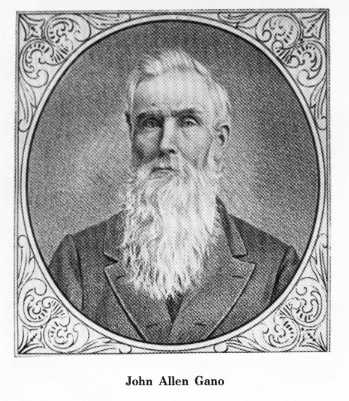
John Allen followed his ancestor’s call for Godly service, but he felt led to minister in the Unitarian faith, strongly opposing religious dissention caused by church members who believed that their own personal manner of worshipping was the only pathway to a relationship with God. He was a staunch defender of the faith. “A Baptist minister named Morgan Wells, said of him, after his death, that John A. Gano had done more toward forming the religious views and controlling the lives of the people, and making peace among men, than any half dozen ministers in the state put together.” (Ref. 2128)
Reverend Gano was loved by many and was the minister who later officiated at the weddings of so many of Catherine’s cousins by her Uncle Thompson. (Ref. 782, 951 It would seem, however, that both John and Catherine were hindered with poor health. Even in his younger years, John was “in bad health” and in 1822, “was suddenly and violently attacked with hemorrhage of the lungs.”
(Ref. 2293) He “was hindered but little in his labors, and so far as his health and strength would admit, he gave himself wholly to the work. In after years, the long and protracted ill health of his wife restricted his field of labor to the regions around his home.” (Ref. 2293) Reverend John Gano died in 1887.

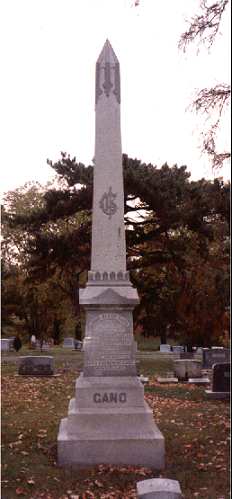
Gravesite of John Allen Gano and his wife, Mary Catherine Conn Gano
*** It is of interest to note that their son, Richard, “was the great, grandfather of Howard Hughes.” (Ref. 523)
Polly and Charles Webb were well settled in Kentucky before adding any more children to their family. The next few years must have been heart breaking ones for Polly because every two years she gave birth to a son that was destined to die in infancy. She and Charles would lose three children in a row. James Webb was born in 1793, Charles Webb was born in 1795, and another baby named Charles Webb was born in 1797. There was a seven year difference between the birth of their first child, Fanny, and the birth of the next child that would live to see adulthood. Surely Caty and James grieved mightily with their oldest daughter as she suffered these difficult losses.
Finally, on July 2, 1798, Polly and Charles welcomed a son who was strong enough to survive the harsh times in which he was born. They wanted a namesake for Charles so very much that they also named this fourth son Charles Henry Webb Jr. This Charles not only made it to adulthood, but he, fittingly, became a doctor.
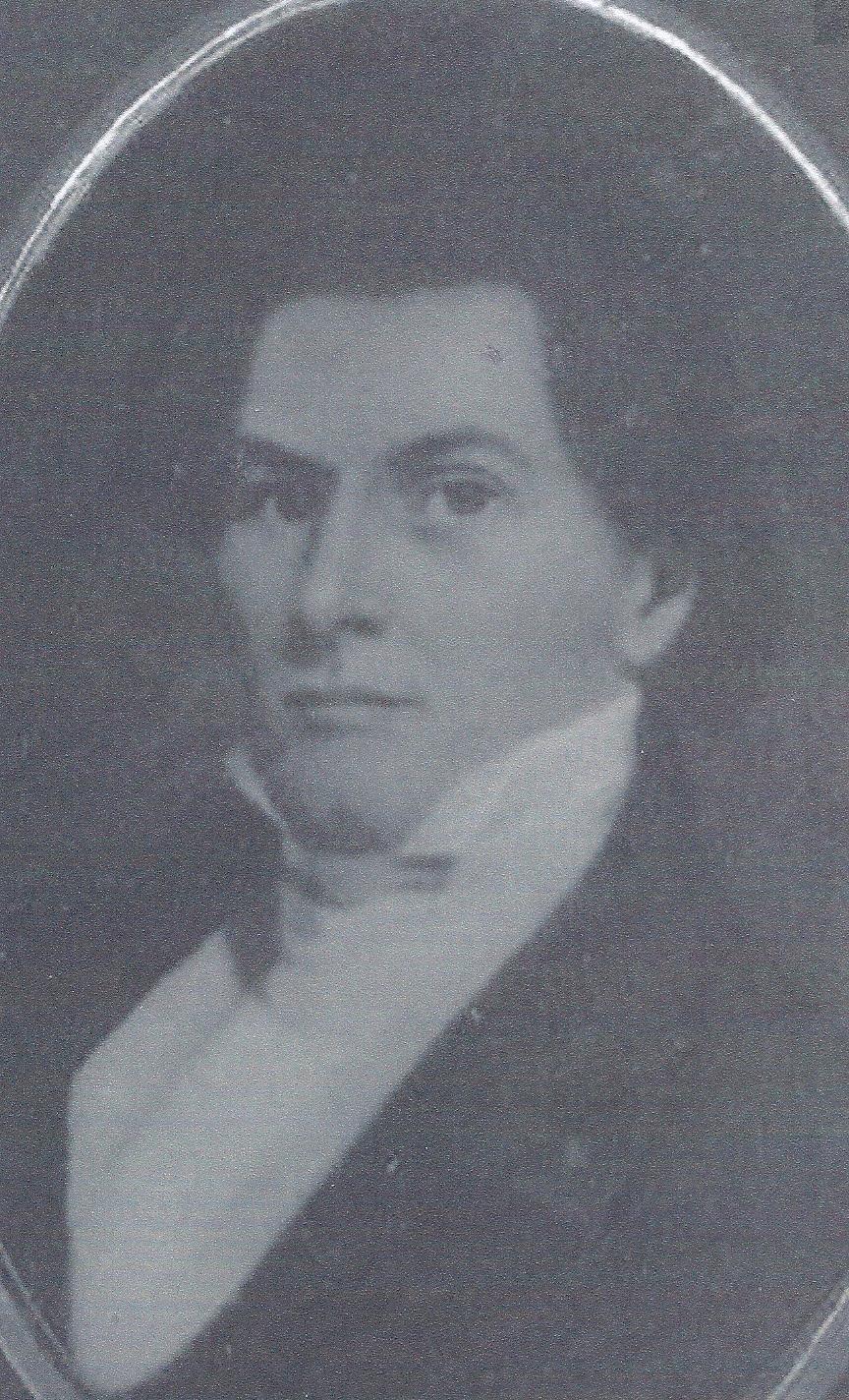 Dr.
Charles Henry Webb
Dr.
Charles Henry Webb
Photo courtesy of Sandra Walker
Through marriage, Charles Henry Webb joined a very interesting family. On February 15, 1827, the handsome young doctor married a lovely woman named Cassandra Frances Ford. She came from a wealthy family with a most colorful reputation.
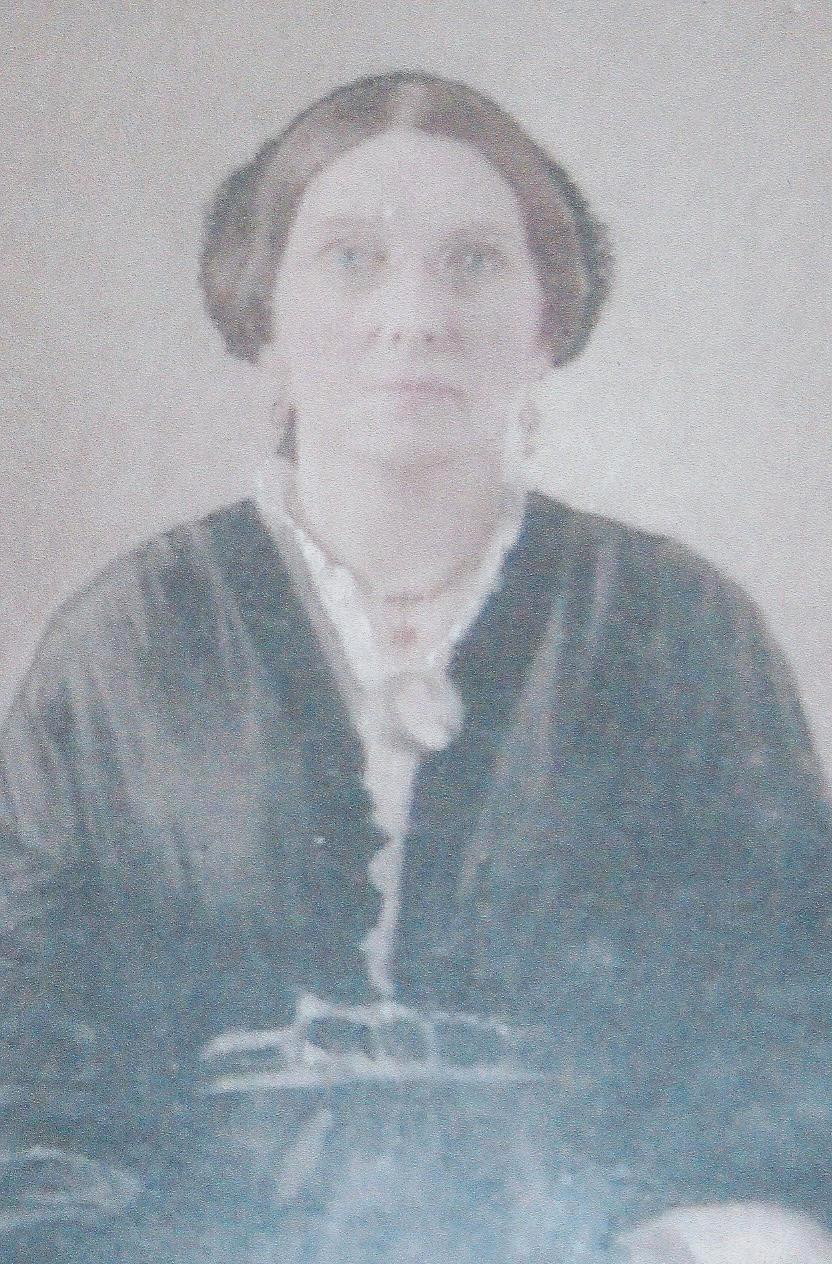
Cassandra Ford Webb Photo courtesy of Sandra Walker
Cassandra’s father was “James Ford, the notorious leader of the Ford’s Ferry Gang that operated out of Cave-In-Rock, a very large cave hollowed out in a huge mass of rock lying at the junction of where the Cumberland River meets the Ohio River.” (Ref. 2094, 2205, 2206, 2207, 2267) Ford was described as “one of the cleverest and most ruthless of American criminal masterminds.” (Ref. 2265)
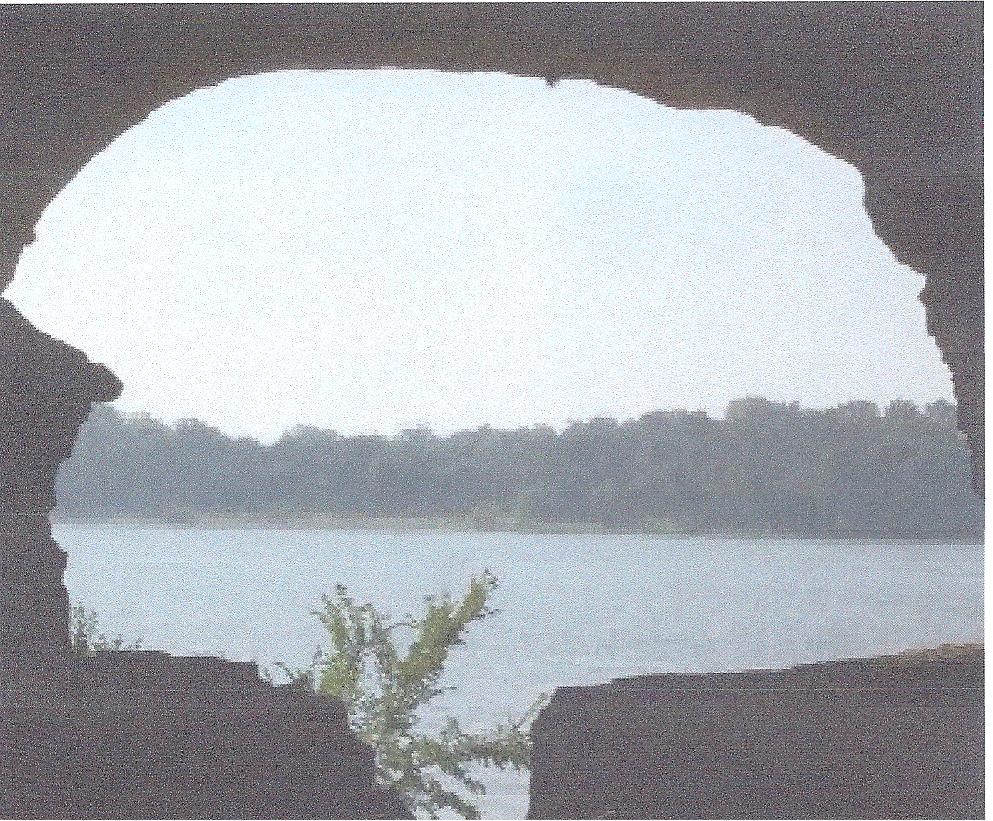
Looking out of Cave-in-Rock (Photo by Waymark)
Cassandra’s father led a somewhat “double life,” however. For a great deal of time, nobody connected him with crimes being committed against travelers on the river. He “had been elected a delegate to the Tennessee Constitutional Convention in 1795, he was Captain of the Livingston County Cavalry of the 24th Regiment of Kentucky Militia from July 1, 1799 to Dec. 15, 1802, he was justice of the peace of Deer Creek, Livingston Co., Kentucky in 1803, and in May 1809, the acting Governor of Illinois appointed Ford justice of the peace for Randolph County.” (Ref. 2267) James had all the appearances of a law-abiding citizen; greed got the better of him, though.
Ford heard that a man named “Sam Mason would lure the flat boats into the cave and then rob the occupants of their wares and kill them. The average flatboat carried 18 people. Since the boats were carried by the river current as propulsion they simply drifted right into Sam’s hands.” (Ref. 2094) Ford wanted a piece of the action.
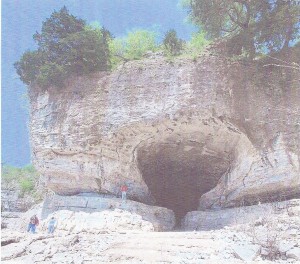 Cave-in-Rock
Cave-in-Rock
James Ford “was a very large young man, powerful and versed in the frontier. He was over 300 pounds and had a commanding voice that came across very authoritative.” (Ref. 2094) He was not a man to argue with and he had quite a little scam going. Not only did he “own Hurricane Island and a 500 acre plantation, where he made his home on the river near Kirksville,” he also “built and maintained a road on either side of his ferry, up-stream from the Cave. When other men would try to operate similar services to cross the Ohio River, Ford eliminated his competition by blocking the road with felled trees and intimidating them through his henchmen.” (Ref. 2267) Although he may not have played a personal role in the robberies and murders from the Cave-In-Rock, he undoubtedly was the puppet master.
As recorded in a book about Thomas Jefferson’s nephews: “There was a ferry across the river at Hurricane Island controlled by James Ford, who, by 1808, had been justice of the peace, and had influenced the establishment of ferries and roads that led the innocent to their ruin . . . Hurricane Island was used as a depot for stolen horses and livestock and boats that had been deliberately wrecked and looted there.” (Ref. 2265) It soon became known that “navigation past Hurricane Island was very dangerous.” (Ref. 2266)
The big problem was that by Ford serving as “Justice of the Peace and later the sheriff, he represented the ultimate legal authority in the region. He was even generous to those who were needy, so he was well liked by many. He had a wife and three children. Ford would watch travelers coming into the areas and if they had money or goods, he would direct his gang to rob them after he had ferried them across the river at Ford’s Ferry. He was mostly unsuspected as a criminal so the new settlers would report the robberies and murders to him - thinking he was the law.” (Ref. 2094)
On one occasion, “Ford and his gang caught some travelers and confiscated their belongings. For some reason, they let a young doctor, who was headed for St. Louis to set up practice, go free. They put him in a boat, told him to get down and not raise up until a time specified by the gangsters. Among the things taken from the party was a mandolin belonging to the young doctor. Finally he landed against the Kentucky shore. He started out through the country until finally a beautiful young lady, driving a buggy, came along and
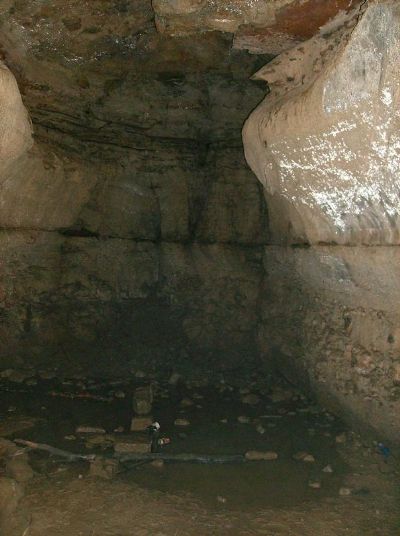 Cave
Entrance
Cave
Entrance
insisted she be allowed to help him. He was hungry, tired, and dirty. She took him to her home and the first thing he saw was his mandolin. He was curious, but didn’t ask any questions. Not knowing who he had run into at Cave-in-Rock or really what the situation was, he kept his cool and let things work out themselves. He was treated so well that he stayed around and set up practice at Salem, Kentucky, being the first medical doctor the town ever had. Also, he fell in love with the beautiful young lady who rescued him and they were married. Who was the girl? She was none other than Ford’s daughter, Cassandra.” (Ref. 4, 2267)
Time eventually caught up with James Ford. “The locals got tired of the harassment of travelers in the area and it got out who was behind the gang. On July 5, 1833, at his plantation, the Regulators paid James Ford a visit. They ordered him to hitch up his wagon and get to a small house down the road. He knew what was happening but didn’t act like he was bothered by it. He sat in a chair in the dogtrot of the house and a man loaded a gun inside the house and aimed the rifle thru the logs of the wall. Ford made a statement to a slave by saying, ‘I guess I’ll eat my supper tonight in hell’ right before the man with the gun fired. It took 2 days to make a casket to fit his large frame. Slaves were used to build it and also to put him on the wagon to take him to the burial site. There was no funeral. The wagon ascended a steep hill toward the burial site and the coffin slipped out onto the road. With difficulty the slaves picked it up and took it to the grave opening. With the weight they were carrying, it was hard. A lightning storm came up and while the effort was made to get the coffin into the ground, a large clap of thunder hit. The slaves were afraid and dropped the casket headfirst into the grave. They ran away, as fearful of him in death as they had been in life. They later filled in the dirt on the coffin with him being buried, to this day, headfirst. One slave said he saw a vision at the clap of thunder of Ford plunging headfirst into Hell. The community at large breathed a sigh of relief but feared the gang would avenge his death. They did not, eventually breaking up and moving down the Natchez Trace.” (Ref. 2094) Mentioned in a book entitled, Satan’s Ferryman, Cave-in-Rock is now a state park in Illinois where thousands visit each year. It was actually used for the movie “How the West Was Won,” which starred Jimmy Stewart. (Ref. 2094, 2205, 2206, 2207, 2267)
Presumably, Charles and Cassandra were unaware of the details of how her father obtained his money. They were well respected citizens in the town in which they lived, and Dr. Webb had a flourishing medical practice. He and Cassandra provided Grandma Polly Webb with nine beautiful grandchildren: Mary Susan Webb, Frances Conn Webb, James Philip Webb, Nancy Winifred Webb, Cannie Webb, Charles William Webb, Augusta Ware Webb, Charles Henry Webb III, and another Cassandra Webb.
Sorrow seemed to plague Polly, however, as tragedy surrounded so many of her children and grandchildren. There was a horrible steamboat accident that nearly killed her one granddaughter, Nancy Winifred Webb, who had been born in 1832. The little girl survived, but her father and sister did not. Charles Henry Webb and her granddaughter, Cannie Webb, died in the same accident. Cannie was only 11 years old at the time. (Ref. 1097)
The devastating event occurred aboard a steamboat called “Lucy Walker,” which was owned by Joe Vann. It was “built for Webber Falls/Louisville trade, weighed 182 tons, and frequently steamed to both Louisville, Kentucky and New Orleans, Louisiana.” (Ref. 496, 2202) According to several sources, “at about 5 o’clock on October 23, 1844, the vessel’s engines stopped and she drifted mid-river about 4 or 5 miles below New Albany while some repairs went underway. Suddenly, the steamer’s three boilers exploded in a mighty blast, propelling shards of metal and pieces of human flesh. One man shot 50 feet in the air only to fall as a missile piercing the boat’s deck. Another was sliced in half by a piece of a boiler wall. The vessel caught fire and quickly sank . . . soon the water was filled with bodies of passengers and crew, both the living and the dead. Many were mangled or burned and survived only by rescue efforts of Captain L.B. Dunham and crew of the nearby snag-boat named ‘Gopher.’ ” (Ref. 1097, 2202) It was a horrendous sight. “This disaster was especially notorious because of the complication of calamities which accompanied it; the explosion itself, the ensuing fire that enveloped what was left after the explosion, and the sinking of the steamboat which resulted in many drowning. Everything happened in such a short space of time that the whole tragedy was completed within a few minutes.” (Ref. 1097, 2202)
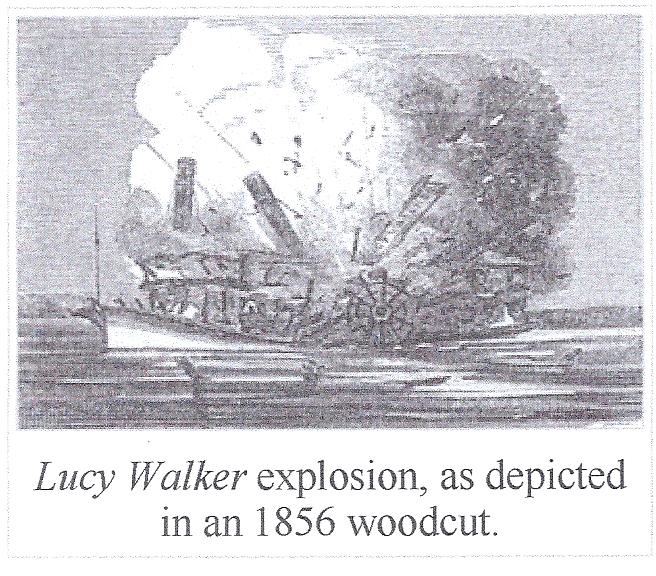
In the following remarkable and jaw-dropping story, provided kindly by Sandra Walker, a descendant of Charles Henry Webb, the horror of the accident can be fully appreciated. This family history has been lovingly preserved through the generosity of Sandra and also Mrs. William Pitt Trimble, the last known owner of the family bible of Charles Henry Webb. The original account was written by Augusta Ford Andrews - - daughter of Augusta Ware Webb Ford, granddaughter of Dr. Charles Henry Webb, and great granddaughter of Polly Ware Webb.
“Every year my mother's father, Charles Henry Webb, Jr., M.D., went to visit his mother Polly Todd Ware, (Mrs. Charles Henry Webb, Sr.). In 1844, as per schedule, he took the trip, leaving his wife (who was expecting a child) and the two youngest children at home. He left the two oldest girls in school in Lexington, Ky. He took Cannie (Cassandra) 11, Nannie (Nancy Winifred) 12, his wife’s half brother (Marse Jim Bobby) James Robert, about 14, and two horses on the steamboat Lucy Walker from Cincinnati to New Orleans to visit his mother. His wife, Cassandra, was not making the trip. She was ‘expecting’ and it was not considered proper to appear in public or to make long journeys when you were pregnant. Also, there were two younger children at home to be cared for.
“The two little girls were in one state room with a servant, and Dr. Webb and his brother-in-law occupied another stateroom. Cannie was recuperating from an illness and her hair had been cut short.
“Around five o’clock in the morning, the boy woke up and went below deck to check on the horses. That was the last time Marse Jim Bobby was seen. The boiler blew. His body was never found.
“Dr. Webb rushed out on deck. There was another explosion and a piece of metal hit him in the throat. The riverboat was on fire and sinking. Complete pandemonium set in.
“A passenger caught the two little girls who were running around the deck in their night dresses. He pushed a mattress in the water and put the little girls on it. The mattress started to sink. Nannie told her little sister that they had to get off the mattress. They could not hold onto the same side because it would tip. They slipped off into the water, one on each corner of the mattress, diagonally. The current caught the mattress as the boats were coming out to pick up survivors.
“A mattress floating on the water was of no concern. Two little girls at water line didn’t even show up. The sparks from the fire had ignited the mattress. When the fire had burned to the edge and it was too close to hold on any longer, Nannie said, “Cannie, don’t be afraid; just hold on until I count to three and we will both let go together.” Nannie counted to three; they both let go of the mattress and sank below the water. Nannie struggled to break the surface for air and went down again. Just when she was sure she couldn’t make it to the surface again, a man in a small boat looked down and saw something floating in the water. He reached over and grabbed a handful of hair and lifted a little naked girl out of the water (the current had ripped her thin nightdress off.) They wrapped her in a rough blanket.
“She was in shock and didn’t know who she was or where she was from. Someone brought her a dress. She said, “That is a servant’s dress,” so they knew she was from a “well-to-do” family. They had heard about an accident upriver that morning so they took her where the survivors were to find out who she was. She didn’t recognize anyone so they took her where the injured were.
“Dr. Webb was with the casualties, his throat was bandaged and blood had soaked through. He could not speak and knew he was dying. When Nannie saw him, she shook her head. No! Her father didn’t look like that!
“He motioned for paper and something to write with and wrote: “This is my daughter, Nancy Winifred Webb. Please contact my wife, Cassandra Ford Webb.” (He also wrote) where to reach her. Word was sent to his home and his pregnant wife rode three days on horseback to claim her child and the bodies of her husband and daughter. The baby was born and named Cassandra; she was also called Cannie for her sister who drowned.” (Ref. 475)
It is hard to fathom the depth of Polly’s grief upon hearing the news of the explosion. Her husband was already dead, her oldest daughter had passed away, and now her beloved Charles, the son whose birth she had waited and prayed for, was gone too. It was on his yearly trip to visit her that this happened. Instead of hearing the welcomed voice of her son at her door, she had to hear the news that both he and one of her granddaughters were dead.
Cassandra Webb, deeply grieving like her mother-in-law, had to have been one very strong, gutsy woman to handle all that was suddenly thrust into her lap. In addition to the new baby Cannie, born under such stressful conditions, she still had all her other children to now raise as a single parent.
Augusta Ware Webb, one of the daughters of Charles and Cassandra, lived well into adulthood. Born October 2, 1840, she was only four years old at the time of the accident, but she must have been a great comfort to her mother. Augusta married her cousin, Francis N. Ford, the son of her mother’s brother, Philip Ford. They were wed on July 21, 1869, at a Presbyterian church in
Cincinnati, Ohio. (Ref. 476) The couple provided two great grandchildren for Polly; Cannie Webb Ford and Augusta Ware Webb Ford.
Cannie married William Pitt Trimble in 1897; “a millionaire and one of the wealthiest men in Seattle.” (Ref. 1097, 2204) In a truly bizarre twist of fate, she also died in a drowning accident. She was with her husband and oldest son in their 1929 Pierce Arrow sedan when it plunged into Washington State’s Elliott Bay.
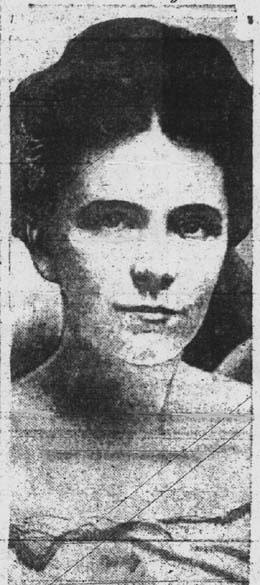 Cassandra
Trimble (1871-1929), December 8, 1929
Cassandra
Trimble (1871-1929), December 8, 1929
Courtesy Seattle Post-Intelligencer
William had stopped the car at the end of the pier to check the engine, but had accidently left the car in gear. When it suddenly lurched forward, Cannie was trapped inside the car “as it smashed through a railing and plunged, nose first, into the water. It sank like a stone in 36 feet of water.” (Ref. 2204) The Trimbles, who were an older couple at the time, left five grown children to carry on the name; Ford, William Jr., Mary, Augusta, and Webb.
Cassandra’s other granddaughter (and Polly’s great granddaughter), Augusta Ware Webb Ford, married William Johnson Andrews of Raleigh, North Carolina, and they had three daughters.
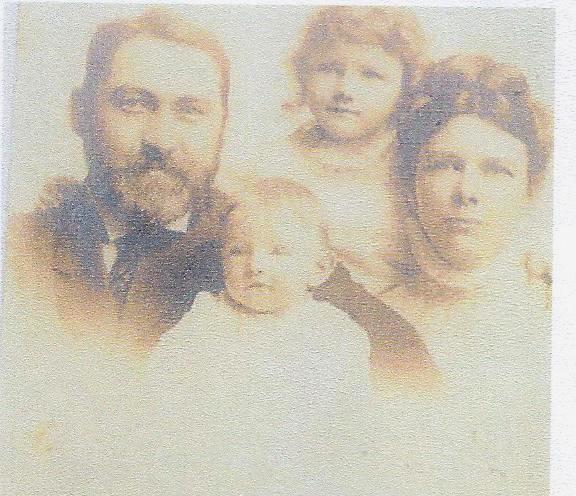 William
J. Andrews, Augusta Ford Andrews, & daughters: Martha Bailey
Hawkins Andrews and Augusta Ware Webb Ford Andrews
Photo owned by Sandra
Walker
William
J. Andrews, Augusta Ford Andrews, & daughters: Martha Bailey
Hawkins Andrews and Augusta Ware Webb Ford Andrews
Photo owned by Sandra
Walker
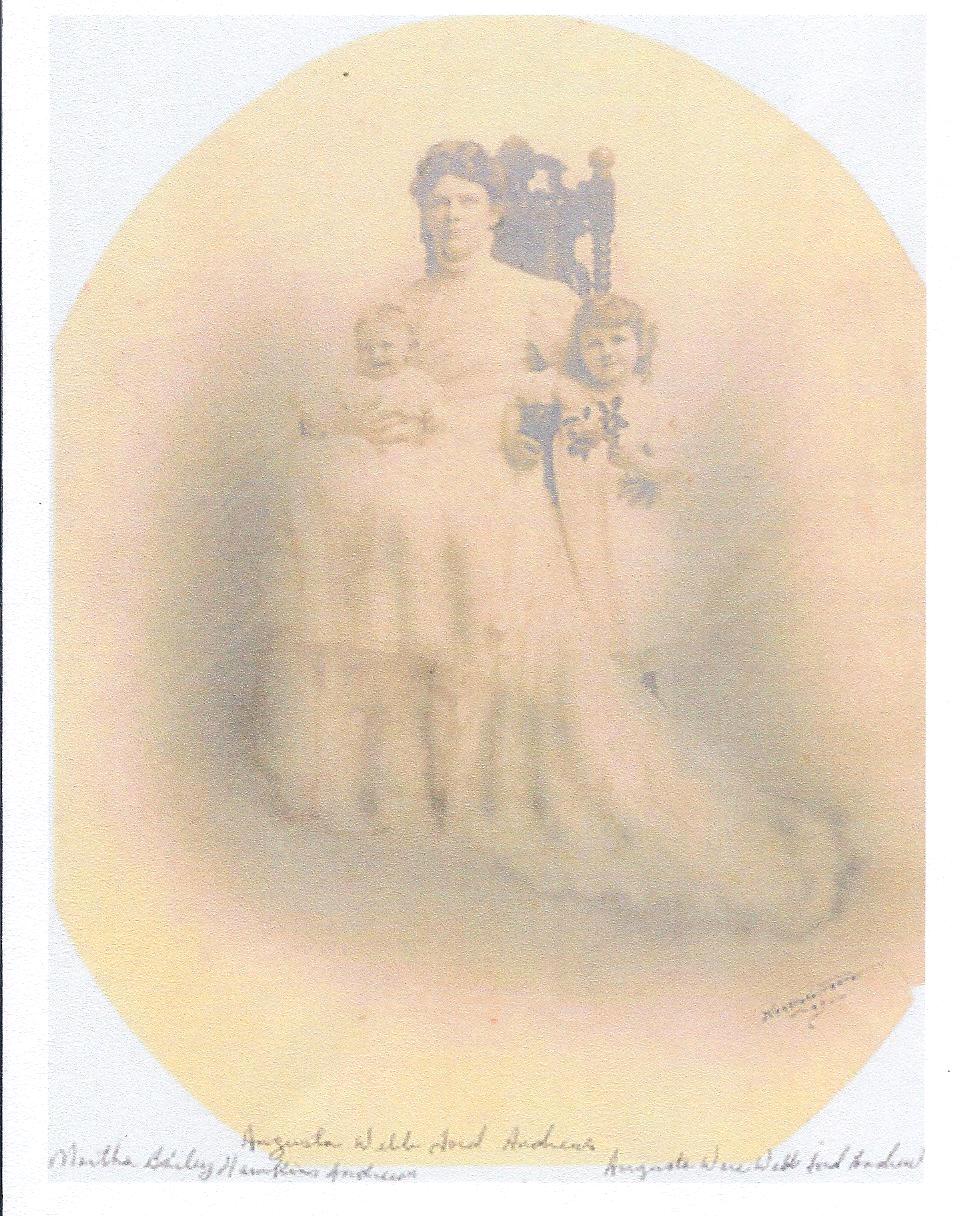 Photo owned by Sandra Walker
Photo owned by Sandra Walker
Augusta Webb Ford Andrews with 2 of her daughters, Martha & Augusta
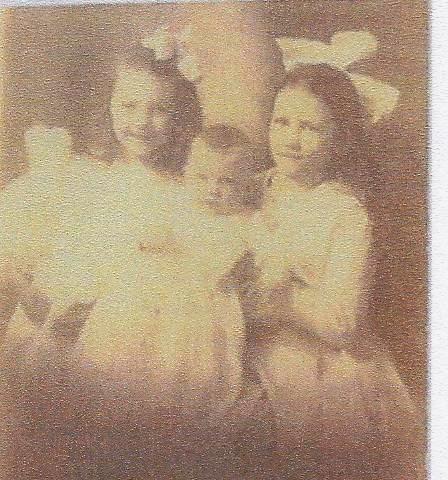 Left to right – Martha Bailey
Hawkins Andrews, baby sister - Jane Virginia Hawkins Andrews, and
oldest sister - Augusta Ware Webb Ford Andrews
Photo
owned by Sandra Walker
Left to right – Martha Bailey
Hawkins Andrews, baby sister - Jane Virginia Hawkins Andrews, and
oldest sister - Augusta Ware Webb Ford Andrews
Photo
owned by Sandra Walker
Surely Polly Webb would have been pleased to know that her son’s name was carried on in such beautiful girls. In a 1945 letter written by Cornelia Ware Anker, she wrote: “Among Father’s letters, I find one written in 1917 from Augusta Ware Webb Ford. She was a descendant of Mary Todd Ware and Charles Webb. She seemed to be a very lovely person and sent her photograph.” (Ref. 2)
Aside from Charles Henry Webb Jr., the only other son that Polly and Charles Webb had was a boy named John Webb who was born on October 23, 1799; just one year after his older brother was born. In Hayden’s genealogy book, he wrote “Mary Todd Webb’s son, John, lives in Hopkinsville, Kentucky,” but, so far, there are no other records for him.
Polly delivered another baby girl on December 18, 1801. They named her Nancy Webb. There was a 10-year difference between Nancy and her older sister, Fanny, but only about three years between her and her two older brothers. Polly was now 29 years old, and husband Charles was 46. This would be the last grandchild from Polly that Grandma Caty Todd would get to know before her death.
Nancy married Dr. Harry (Henry) Eggleston Innes in Paris, Kentucky, on Tuesday, July 27, 1819. (Ref. 974) He was the youngest son of Hugh Innes and Hannah Eggleston. (Ref. 2017, 2201) “Dr. Innes
did service in the War of 1812 as a surgeon’s mate in the company of Capt. Mathew Flourney, a part of the first regiment commanded by Col. George Trotter of Lexington. He received a pension for his service during the war.” (Ref. 2017)
Nancy and her husband owned land that joined property owned by Henry’s brother on Russell Cave Road. “The tax record of 1817 for Fayette County showed Dr. Henry Innes with 880 acres of land on the Elkhorn River. A small brick house discovered in the field on the property was probably the house built by Harry Innes as his place of residence.” (Ref. 2017)
 (Ref. 1022)
(Ref. 1022)
Map showing location of Corinthia
In the years 1831-32, Henry Innes represented Kentucky in the state legislature. (Ref. 2017, 2201) His cousin, Thomas Todd, would later be named by President Thomas Jefferson as a Justice of the Supreme Court. According to a letter sent to Sally Stribling, written sometime after 1820, her Aunt Lucy Webb wrote, “Nancy Innes has four children: Charles, Mary, Frances, and Robert. The doctor is a very clever, rich man.” (Ref. 597)
Some of his great wealth could be seen in the home that Dr. Innes started to build for his son, Charles. “The casual viewer takes little notice of the house in the distance [meaning the home of Dr. Innes] as their eyes are drawn to the stately house closer to the road. This house, called Corinthia, was built for his son, Charles Webb Innes. It is an enormous house with massive columns on the front. The construction of Corinthia was begun in 1832 but took many years to complete.” (Ref. 2017) According to a Kentucky home registry, the home is also known today as Oak Wind Farm.
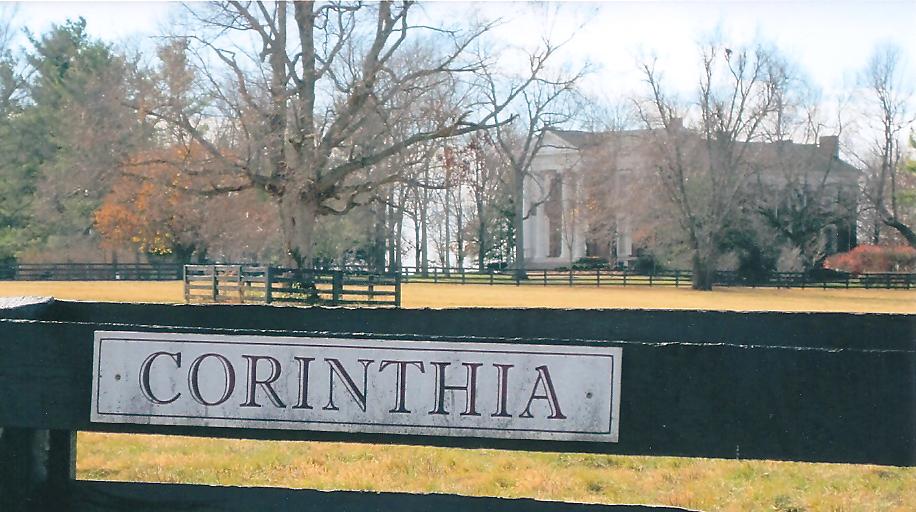
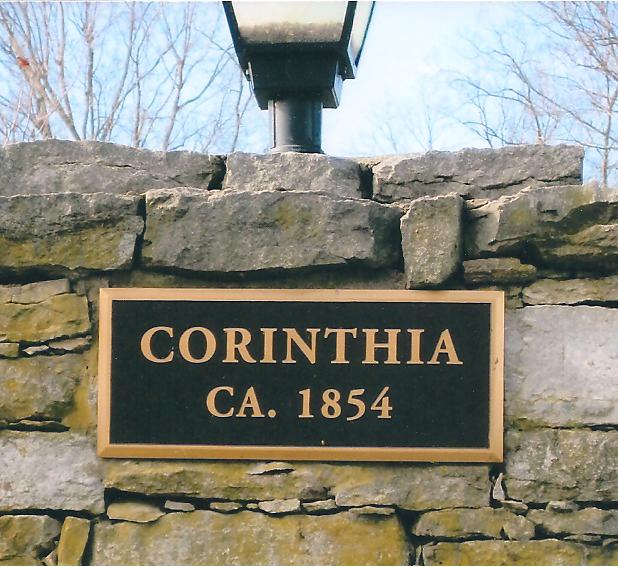
 Corinthia
Corinthia
Photos taken by James and Judy Ware 2010
Sadly, Nancy’s husband died in 1833 during the horrible cholera outbreak that swept through Kentucky. The family bible records his death date as “June 18, 1833.” Since his will stated that “the mansion house and 300 acres went to his widow and the remaining 720 acres were to be divided among his three infant heirs,” one can assume that one of the children must have already died. (Ref. 2201)
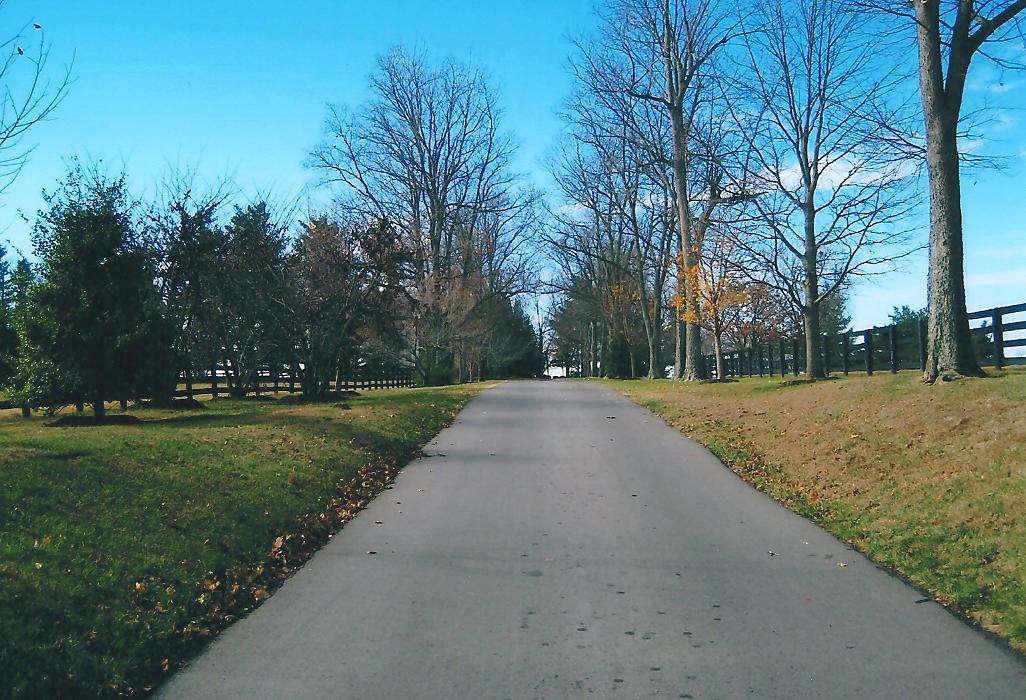 Entrance
Entrance
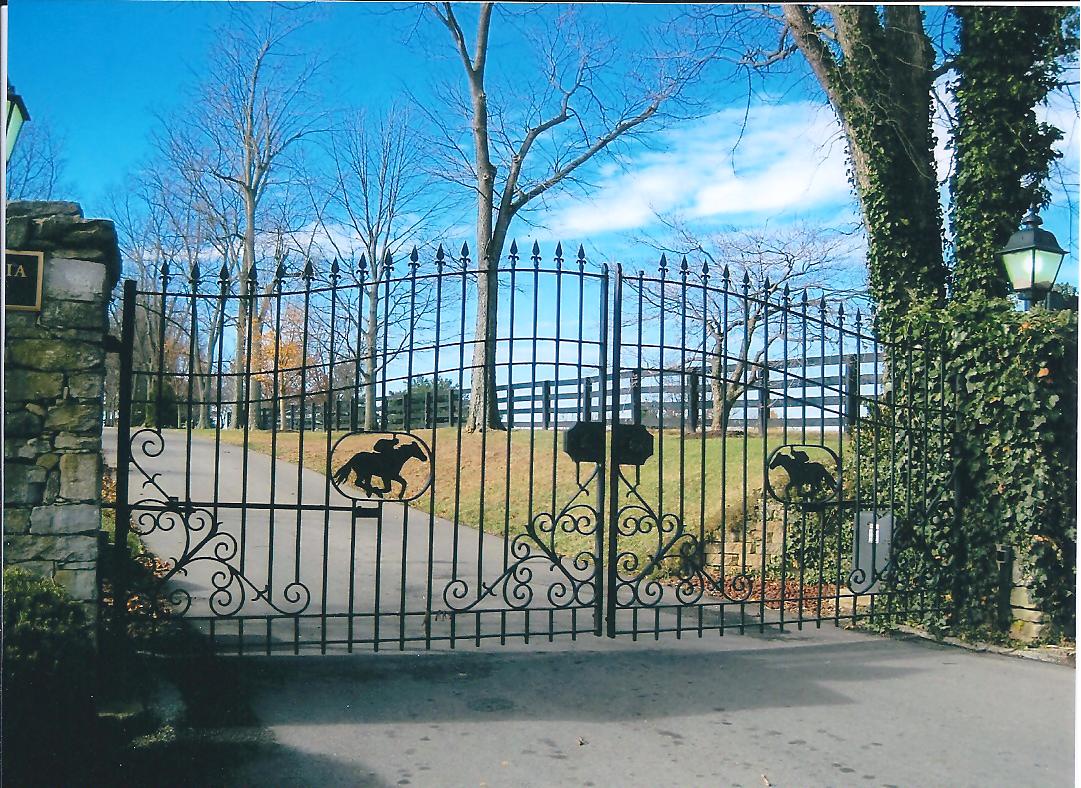 Gate
leading into Corinthia
Gate
leading into Corinthia
All photos of Corinthia provided courtesy of James & Judy Ware 2010

Corinthia
 Home of Charles Webb Innes
Home of Charles Webb Innes
Wall in
front of Corinthia


Current map (as of 2011) showing the approximate location of Corinthia in respect to Russell Cave Road, Ware Road (home of James II), and Grissom and Stewart Roads where the Webb/Ware Cemetery is located.
The last child born to Polly and Charles Webb was another daughter. This one arrived on February 29, 1804, and they named her Winifred, or Winny. By the time the little girl turned just two years old, her father had passed away. Charles Webb died in 1806, leaving his 34-year old wife to raise their children alone. Her brother, Thompson, once wrote, “Your Aunt Polly Webb is a widow and I suppose will never marry again.” (Ref. 35E)
Polly must have been a wonderful influence on her family, for all her children married well. Winny married Major George W. Williams on March 23, 1824. (Ref. 589, 621, 2204) George, a true romantic, was, obviously, very much in love with her. In a letter written three years after their wedding, he shared his feelings with Winny’s cousin, Josiah William Ware. In flowery, sentimental words, he wrote:
“There was but one object on earth whose idea was enthroned in the center of my soul. The possession of that object was the culmination of all my hopes, of all my desires. You know that Heaven gave it to me and in it, my wife. Since that time, the delirium (of young love) has subsided, the fever has abated, but in its place there has come a calm, a sensible, a reasonable knowledge of the worth of woman and the blessings of matrimony. What I have said, I assure you, is religiously true.” (Ref. 141)
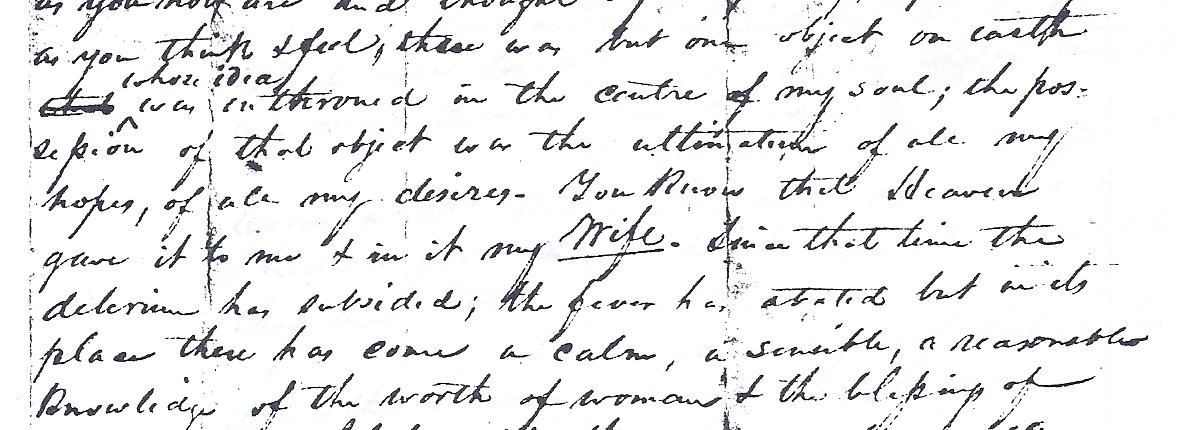
Small section of the letter – original copy owned by James & Judy Ware
Winny and George seem to have had a very close marriage. Lucy Webb, her aunt, wrote that “Winny Williams has four children; Mary, Franklin, Frances Webb, and I think the youngest named George. She is in very bad health ever since her confinement about 4 months ago. Mr. Williams is a sensible, clever man. I suppose he will be rich at the death of his father, should he outlive him. But Winny is very independent herself. With the assistance of her mother, they are all doing well.” (Ref. 597) Winny obviously recovered her health after the birth of the baby mentioned in the above letter because she and George went on to have a total of 12 children together!
The Williams family was very active in the Paris, Kentucky, community. The “first debating society was organized in Paris” around the year they married and George was listed as “among the prominent members there.” (Ref. 2255) The family attended the Unitarian church that sprung up in the town, and despite Polly’s initial reservations about the new church, she decided to be baptized there along with her daughter.
Even though Winny was baptized in the Disciples of Christ faith, it is interesting to note that on February 25, 1864, “George W. Williams and his wife Winifred Williams sold eight acres of land to the Right Reverend George Alloysius Carrel, Roman Catholic Bishop of Covington of the County of Kenton and the State of Kentucky and to Reverend Father Brandts ‘and to his successors in office forever to be held and used as a Catholic buring gound.’ ” (Ref. 2283) The entrance to this graveyard is 60 19th Street, Frankfort, Kentucky, and it is known as Mt. Olivet Cemetery.
Mt. Olivet Cemetery
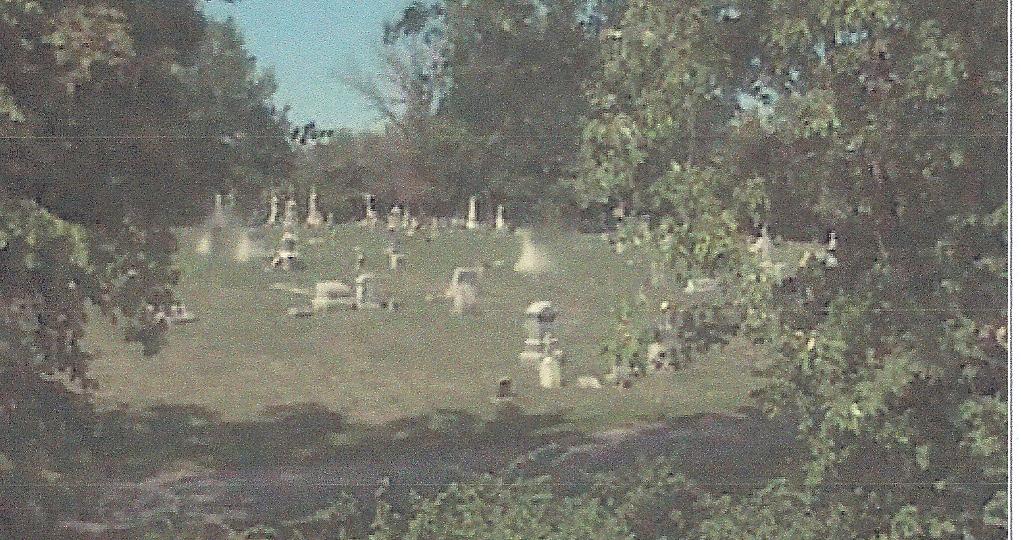
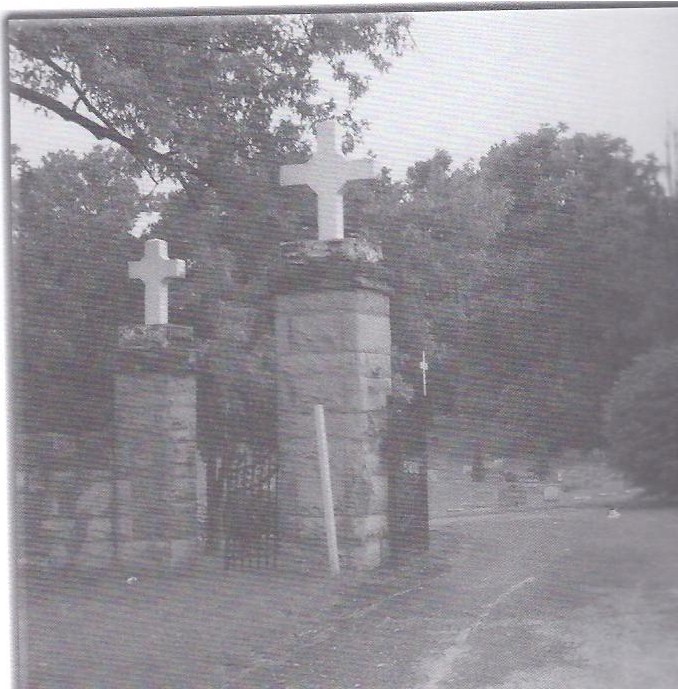 Entrance into Mt. Olivet
Cemetery (Ref. 2283)
Entrance into Mt. Olivet
Cemetery (Ref. 2283)
Having graduated from old Transylvania University,
George’s education served him well. He had a very lucrative law
practice and
 Transylvania University
Transylvania University
was described as being a “man of prominence in his profession.”
(Ref. 2255) He “served more than 20 consecutive years without a single defeat in both Houses of the Legislature, and in conjunction with Honorable Garret Davis, he represented Bourbon County in the convention which framed the Constitution of Kentucky.” (Ref. 2255, 2203) Some years before the Civil War, George “freed his slaves and was an uncompromising Union man during the war.” (Ref. 2279)
Clearly, Winny was well loved in the community as well. The following excerpt from A History of Kentucky and Kentuckians gives a wonderful account of her life.
 (Ref.2204)
(Ref.2204)
One
of Winny’s daughters, Frances Conn Williams, married Thomas Henry
Clay on July 26, 1864. He was a cousin of the famous orator, Senator
Henry Clay.
 The Heights
The Heights
Fannie and Thomas built a lovely home. The “two-story Greek Revival frame house with a series of Queen Anne and colonial revival additions and alterations forms one of the larger residences in Bourbon County.” (Ref. 2290) Thomas was “a successful farmer [who] owned 3,000 acres by 1877 and named his farm the Heights.”
(Ref. 2290)
The Clays had five children. The youngest, Nannine Williams, married Frederick Alfred Wallis on April 4, 1901. “The Clays were among the most socially prominent and wealthiest families in Bourbon County, Ky. The bride's great-grandfather, Col. Henry Clay, had been politically active, heading an emancipationist society to end slavery and running for office on behalf of that cause. Her grandfather, Samuel "Graybeard" Clay, had taken some 400 acres given him by the colonel and expanded that holding to more than 10,000 acres. Her parents' elegant home was called The Heights and was ranked as one of the most beautiful of the entire Bluegrass state. Her father was active in the Christian Church of Paris, Kentucky.” (Ref. 2255 & Sandra Walker)
The home of Nannine and Frederick Wallis is now owned by the Woman’s Garden Club. The “Nannine Clay Wallis Arboretum” is located at 616 Pleasant Street, Paris, Kentucky, and has been preserved in her honor. (Ref.2204)
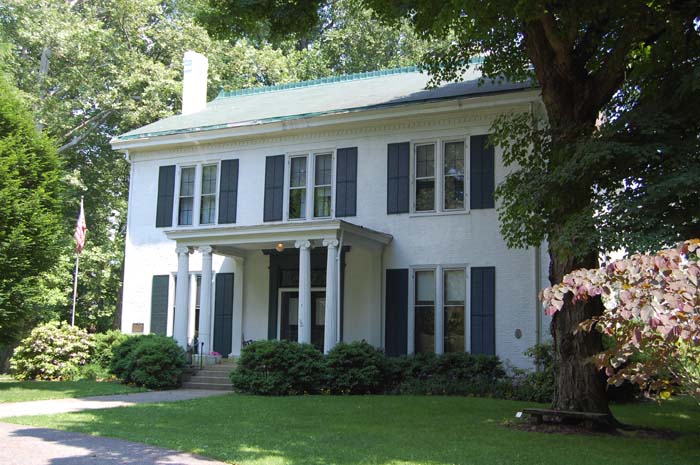 The
Wallis House
The
Wallis House
The
Garden Club of Kentucky, Inc.
State Headquarters
616 Pleasant
Street
Paris, Kentucky 40361
859-987-6158
Home of Nannine and Frederick Wallis
All photos provided courtesy of James & Judy Ware 2010
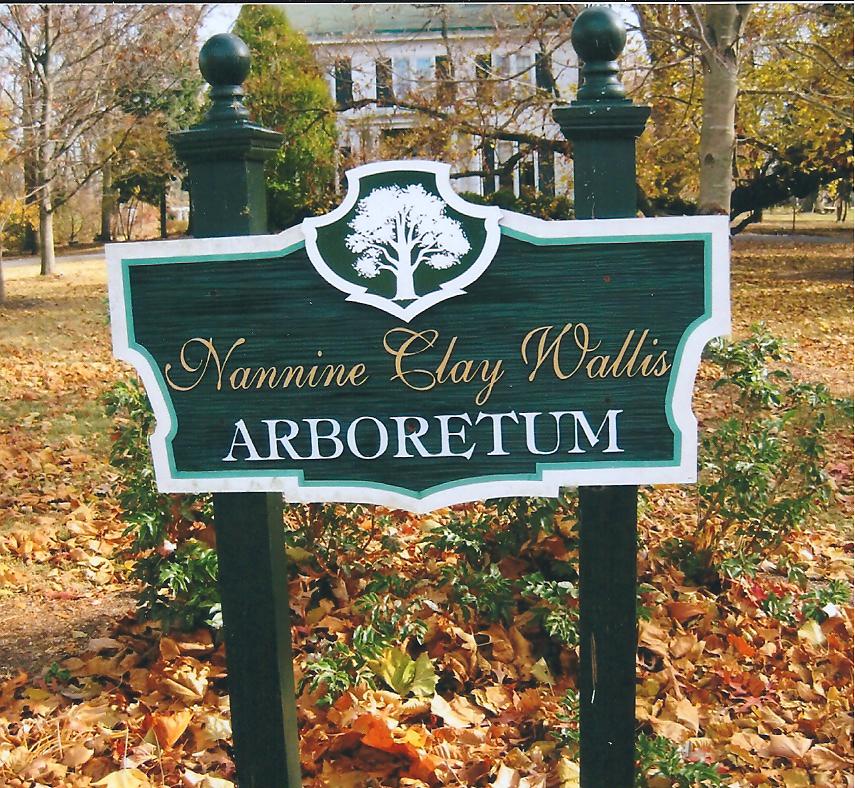
Signs in the front
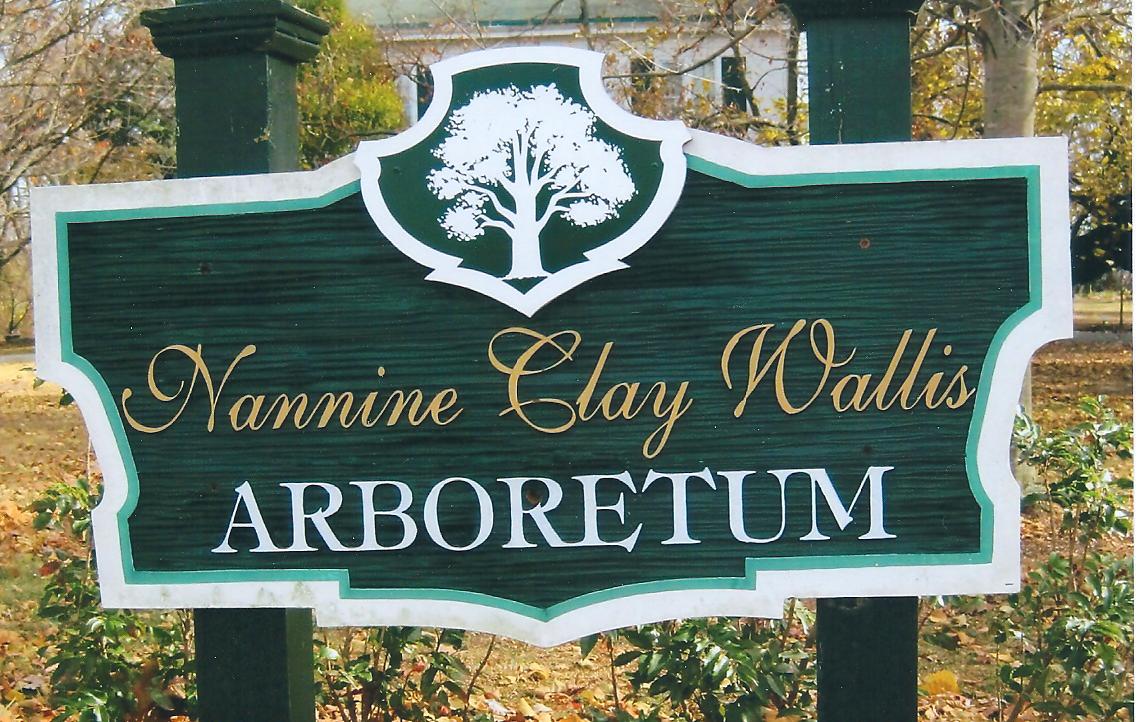
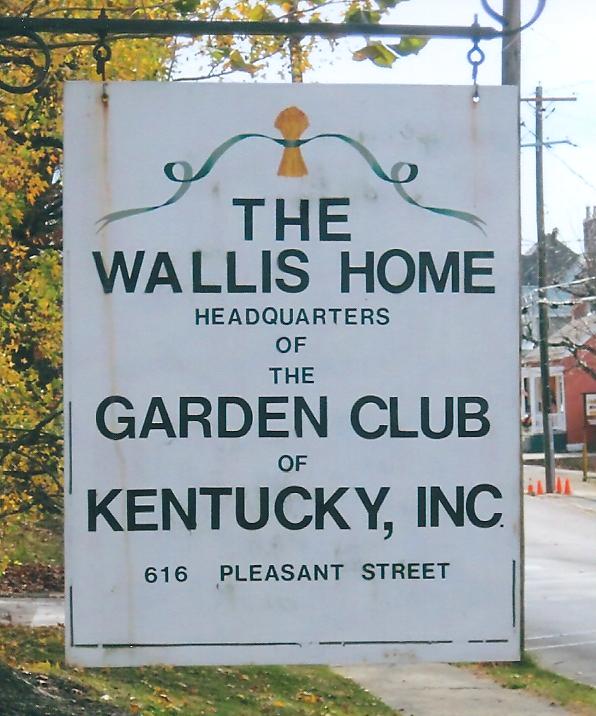
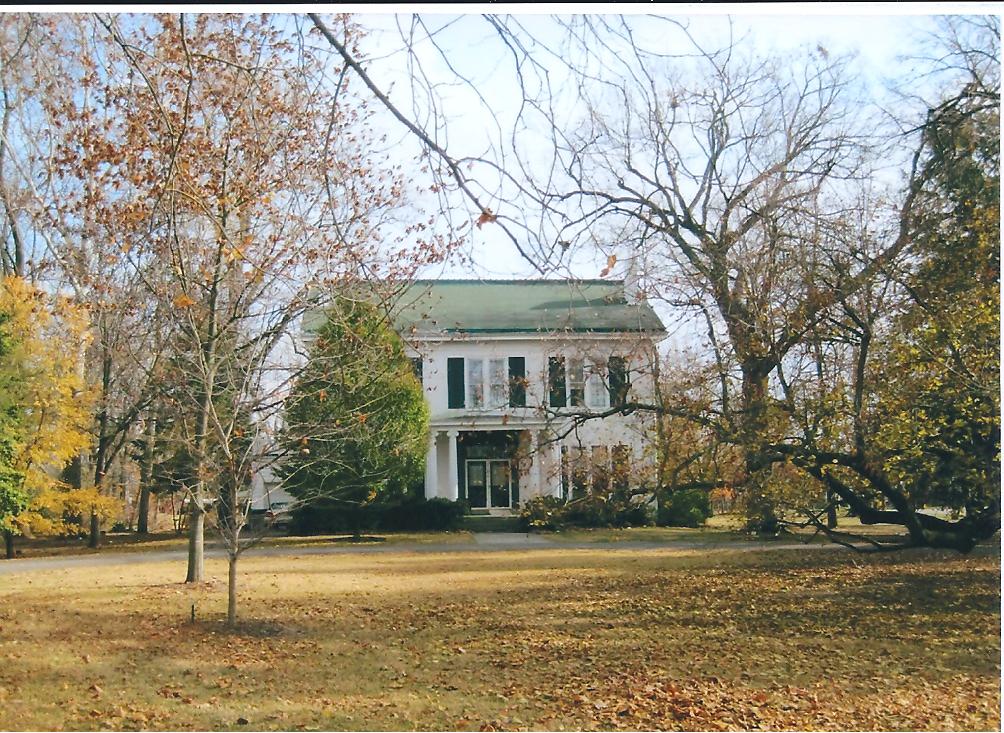
Nannine Clay Wallis Arboretum
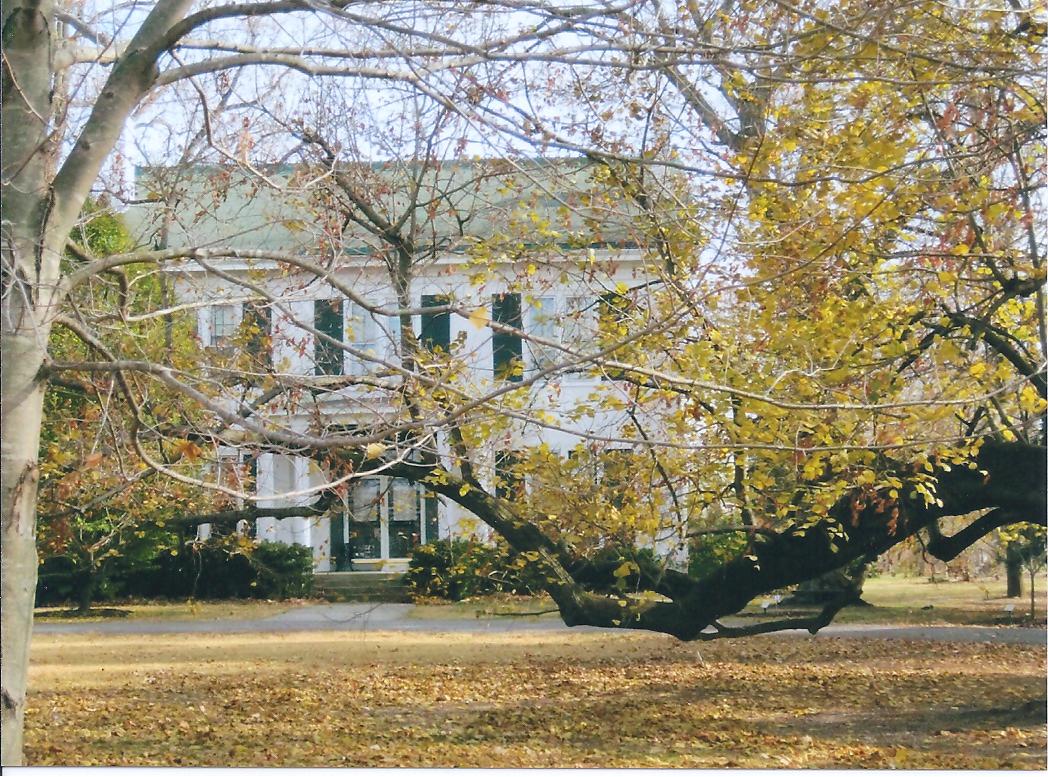
Photos taken by James & Judy Ware 2010
When
Polly and Charles Webb first came to Kentucky, they settled around
the Versailles and Paris area. Their
land was “on
the waters of David’s Fork of Elkhorn in Fayette County.”
(Ref.1057)
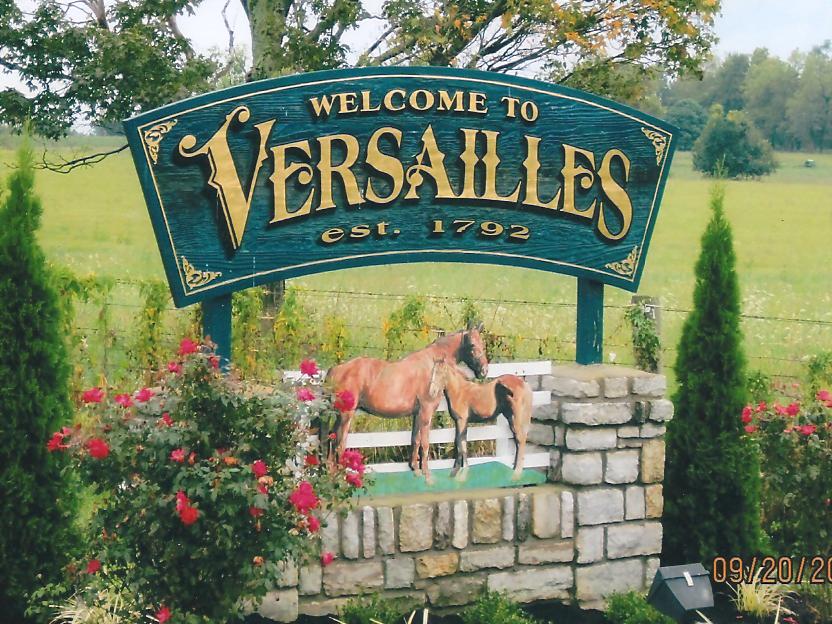 Location
where Polly and Charles Webb lived
Location
where Polly and Charles Webb lived
Charles was active in public affairs and, at one point, when “William Smith was appointed overseer of Cleveland’s road from the crossroads at Pew’s Tavern to the county line, Charles Webb was assigned to furnish a list of the hands.” (Ref.1044) The family, as mentioned before, was also active in the church. “With the transfer of other social institutions from Virginia, the church found its way across the mountains too. In 1781, the Baptist Traveling Church came to Kentucky from Virginia. The different denominations were influential in shaping the doctrinal beliefs of the frontier.” (Ref. 2208) Most of the Ware families seemed to gravitate to the Baptist church, at least in the beginning.
The Webbs were first members of the David’s Fork Baptist Church. “It was begun as a branch of Bryant’s Station Church which was constituted in 1786 and remained so for about 15 years.” (Ref. 2282) During the Great Revival era, or what has been called the Second Great Awakening, “over 500 new members joined the church. Bryan’s Station was so large and its membership was scattered over so great an area, that another house of worship was built upon the headwaters of David’s Fork Creek.” (Ref. 2282) David’s Fork Baptist Church then “became an independent church on August 26, 1801.” (Ref. 2209)
David’s Fork Baptist Church circa 1940’s (Ref. 965)

David’s Fork Baptist Church as of 2010 –
Photos below taken by James & Judy Ware

Not only did Polly and Charles attend David’s Fork Baptist Church, but they also made sure their slaves attended there as well. The records show both the baptism and death dates for their slaves Sucky and Virgin. The records also show that “in March of 1803, Pompy had a complaint lodged against him for threatening to start a fire, and Alse had a complaint lodged for committing adultery, disobedience, and lying.” (Ref. 2004) In later years (as mentioned before), Polly decided to change over to the Unitarian Church with her daughter and granddaughter. (Ref. 965)
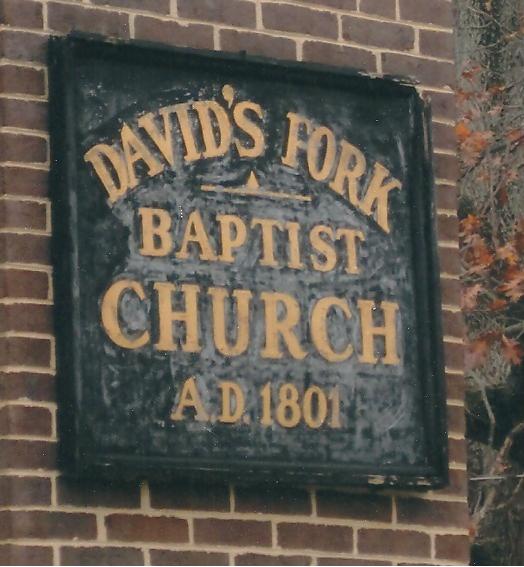
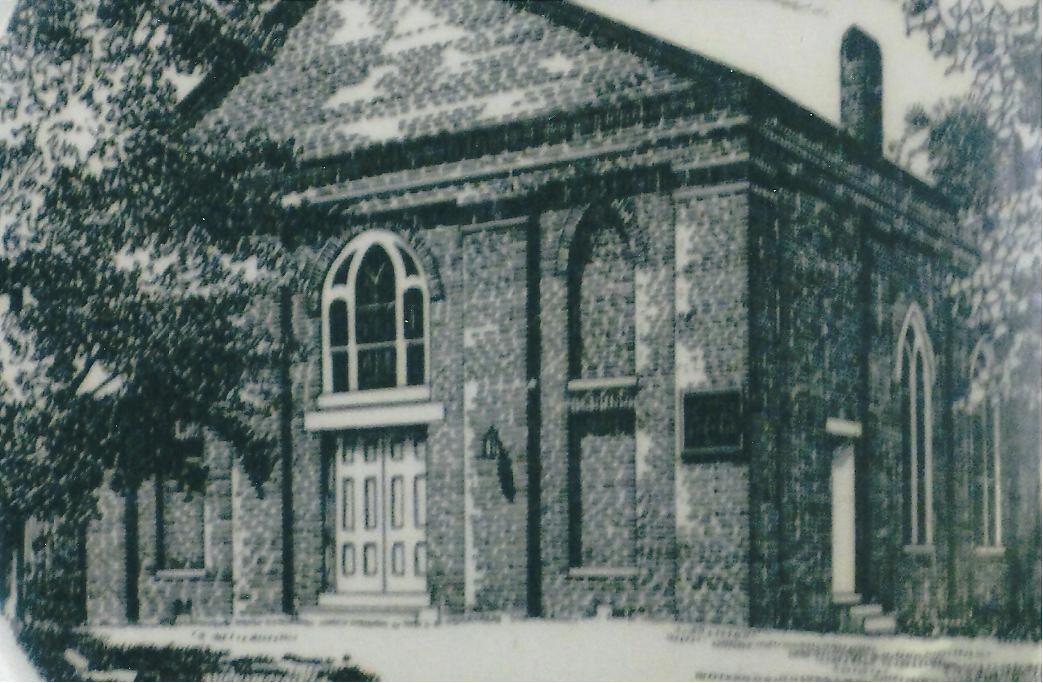
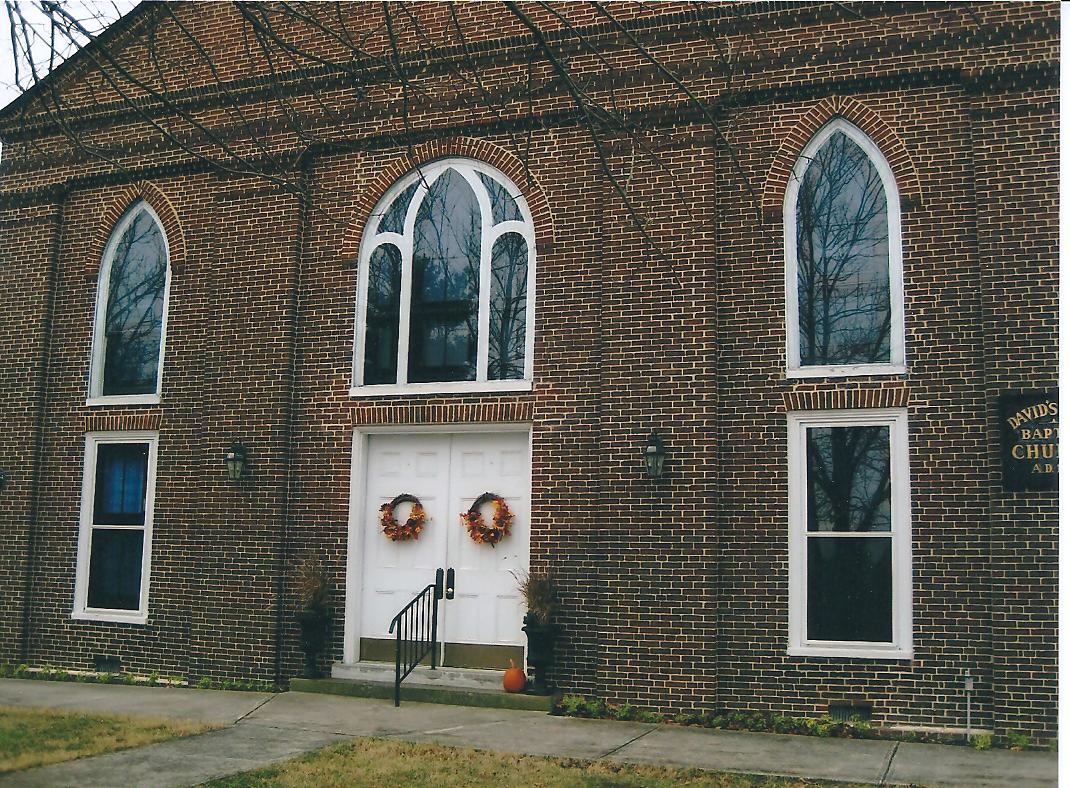
All photos taken by James & Judy Ware 2010
Interior of David’s Fork Baptist Church
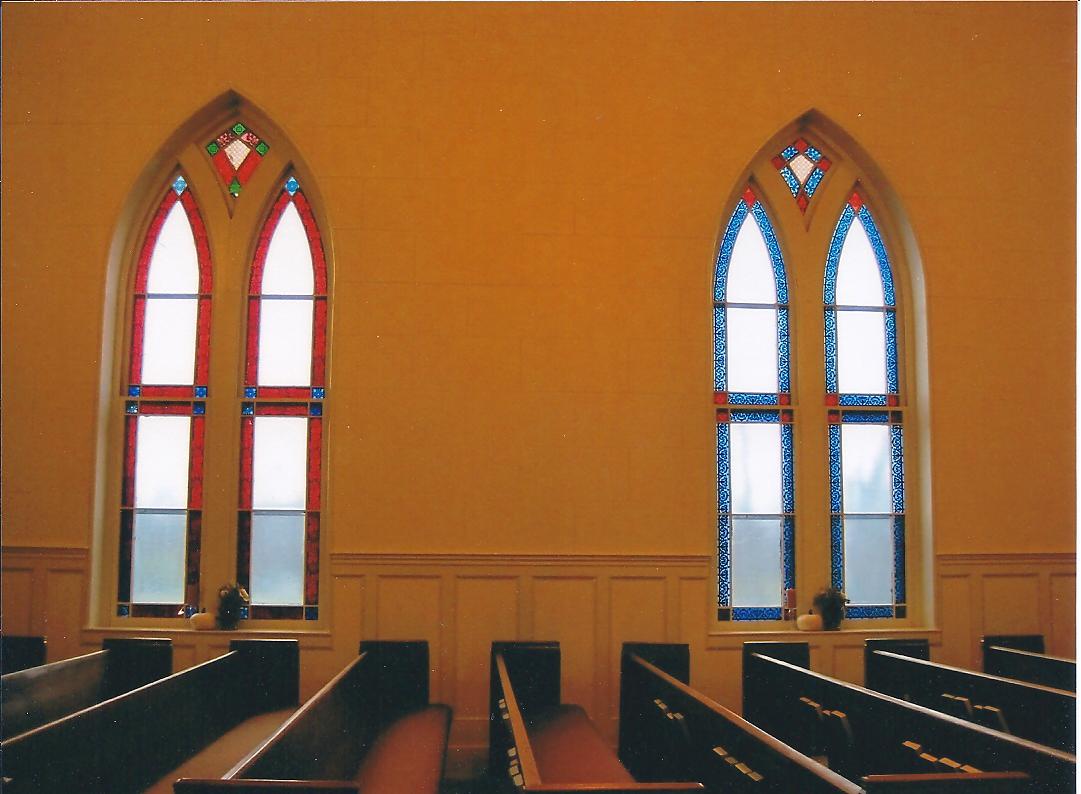

Thompson Ware and his large household stayed in close contact with Polly’s family. Her brother wrote in a letter that, “Your Aunt Polly Webb lives within a mile, where we can see each other every week.” (Ref. 35E) That must have been a great comfort to Polly, especially after Charles died. Her life in Kentucky had not been an easy one. Polly had endured the hard trip to her new home on the frontier with an infant in her arms. She then gave birth to, and lost, three baby sons in a row. She watched as her oldest daughter, Fanny, died a premature death, and then she had to deal with the tragic deaths of her son, Charles, and one of her granddaughters in the steamboat accident. Her husband, Charles Webb, died when Polly was only 34 years old, and she subsequently spent 48 long years as a widow. She must have relied on her brother quite a bit over the years.
When Charles died in 1806, “his brother, Isaac, and Polly were the administrators of his will, and they had an estate sale on July 8, 1806. (Ref. 974) This was quite common at the time. “Earlier, on May 12, 1806, an inventory and appraisal of the estate of Charles Webb, deceased, was ordered to be recorded.” (Ref. 1044C) It must have been quite a chore to settle all of the estate because the records show transactions still occurring as late as 1819, a full 13 years after his death. The Fayette County, Kentucky Records show some of the settlements that came out of the estate of Charles Webb:
Survey & division of land of Charles Webb, deceased, 309 acres adjoining James Ware and bounded by Isaac Webb, and allotment of widow’s dower. April 6, 1819 Papers also dealt with division of slaves to Charles Webb, Nancy Webb, and Winney Webb.
Appraisal of the personal estate of Charles Webb deceased, by commissioners & recorded in May Court 1806.
Account of the sales of the estate of Charles Webb, deceased, August 11, 1806 and Dec. 15, 1807, total 800 pounds, 2 shillings, 9 pence. Signed by James Webb, administrator. Recorded Nov. Court 1808
Allotment to the widow of Charles Webb, deceased, of her dower, 1/3 of the sales amount of the estate, plus property and land by commissioners recorded Nov. court 1808
Accounts of the estate of Charles Webb, deceased, with Isaac Webb administrator and Polly Webb Administratrix, April 13, 1808 by commissioners & recorded in Nov. Court 1808
Allotment of the estate of Charles Webb, deceased, to his daughter Fanny, recorded April court 1809 (Ref. 1043C)
“Leonard Young, Clifton Rodes, Asa Thompson, and William Smith Jr. were appointed Commissioners to examine and settle the accounts of Isaac Webb and Polly Webb, administrators of the estate of Charles Webb deceased and also to allot and set apart to the widow of the decedent her dower in the estate of her husband.” (Ref. 1044C)
On the petition of Polly Webb and Isaac Webb, administration of the estate of Charles Webb deceased is granted them – they entering into bond with James Ware. (Ref. 1044B)
 Polly Todd Ware Webb lived a remarkable
life during an era in our country’s history fraught with danger and
adventure. From traveling (as a new mother) on a flatboat down the
Polly Todd Ware Webb lived a remarkable
life during an era in our country’s history fraught with danger and
adventure. From traveling (as a new mother) on a flatboat down the
river to
raising her family under the harshest of conditions, she embodied the
true spirit of the pioneer woman.
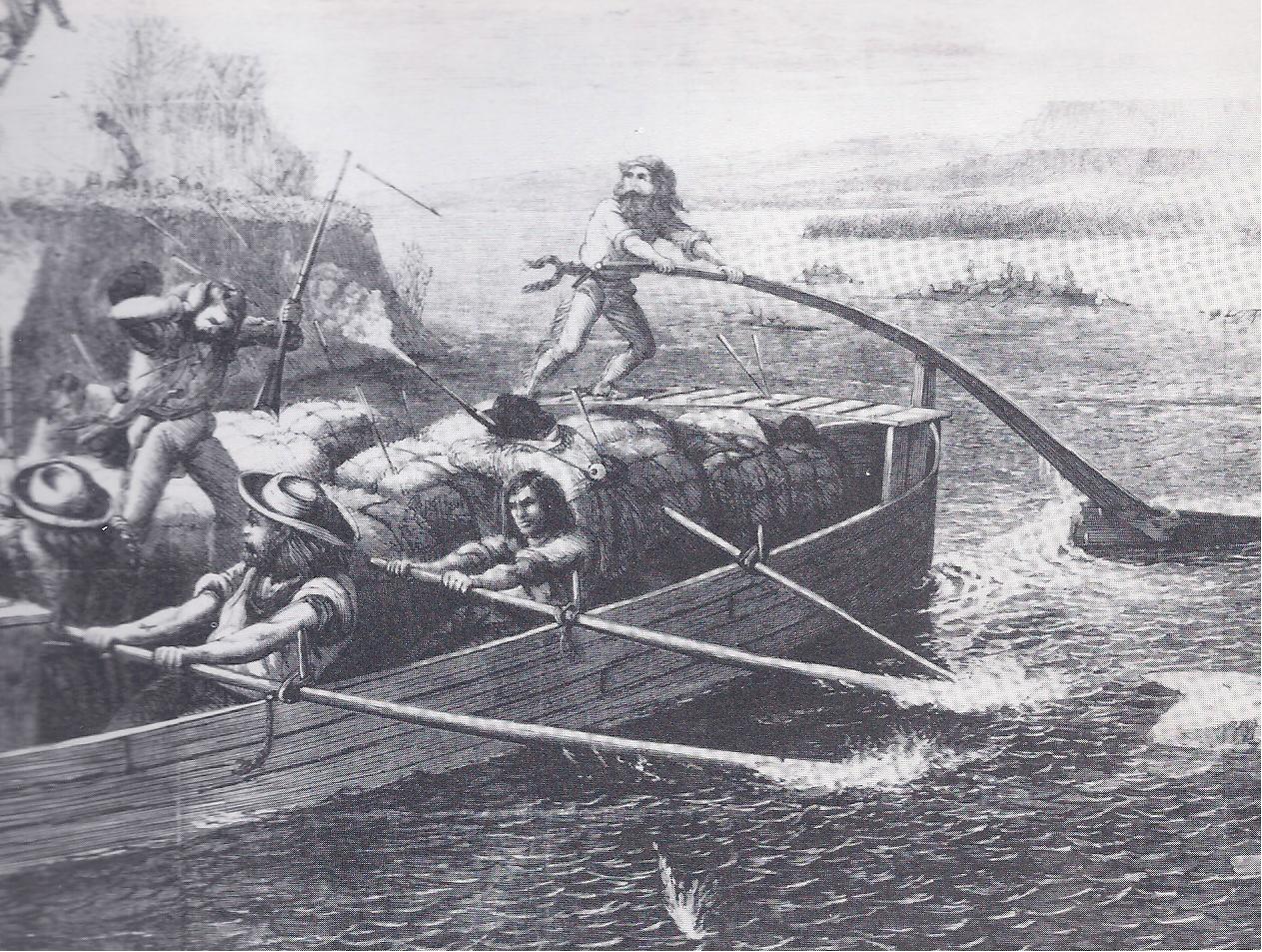 sample
Polly enjoyed sharing her
memories with her many grandchildren, and they, in turn, passed on
her story to each new generation. This oral history provides great
insight into her life and the situations she experienced. One such
example is the following story kindly shared by Sandra Walker,
Polly’s great, great, great granddaughter. One can almost hear the
sound of Polly’s voice as her story is told once more.
sample
Polly enjoyed sharing her
memories with her many grandchildren, and they, in turn, passed on
her story to each new generation. This oral history provides great
insight into her life and the situations she experienced. One such
example is the following story kindly shared by Sandra Walker,
Polly’s great, great, great granddaughter. One can almost hear the
sound of Polly’s voice as her story is told once more.
![]()
“The country was still a wild and a dangerous place to live. A relative and his family had headed west, where land was plentiful and possibilities were endless. Small communities formed for protection and help with labor.
One afternoon the children were out in the yard while their mothers were doing the laundry. The men were away from the house, clearing land. A small group of Indians suddenly appeared and rode through the yard, pulling the wet laundry down and dragging it on the ground. It was not an attack, just harassment. As they made their final circle of the yard, one of the braves leaned down and scooped up a young child and rode off with her. The girl’s mother ran to ring the bell and summon the men from the fields. When they arrived, she told them what had happened. A group was gotten together to go find the little girl.
When they reached one of the camps, the men had the children all line up and they rode down the line. No white child was to be seen. All the children were Indian looking with black hair. The men turned their horses and started to ride out to look for another camp.
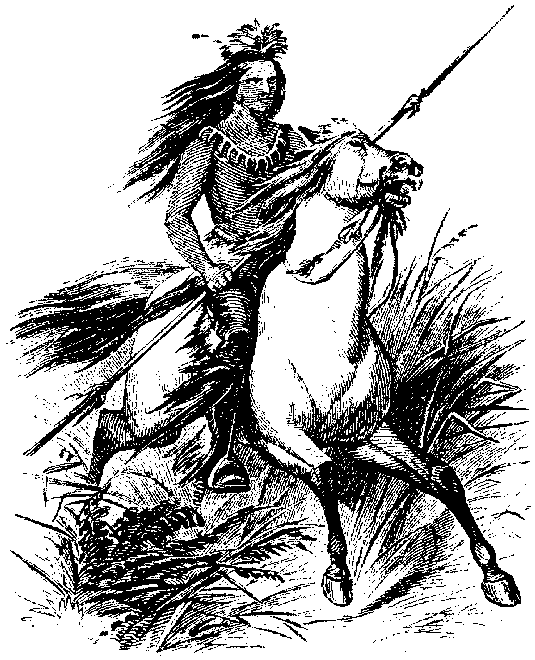 They
had not gone far when the father of the little girl changed his mind
and the others followed him back. He knew his eyesight was failing,
so he wanted to double check. He made the Indians line up the
children again, but this time he dismounted and laid his hand on each
child’s head, pushing their hair back and speaking softly. He
would quietly ask, “Is that you, Daughter?” About halfway down
the line, he pushed the hair back on another child and asked, “Is
that you, Daughter?”
They
had not gone far when the father of the little girl changed his mind
and the others followed him back. He knew his eyesight was failing,
so he wanted to double check. He made the Indians line up the
children again, but this time he dismounted and laid his hand on each
child’s head, pushing their hair back and speaking softly. He
would quietly ask, “Is that you, Daughter?” About halfway down
the line, he pushed the hair back on another child and asked, “Is
that you, Daughter?”
There was a pair of blue eyes looking up at him and a timid little voice answered, “Yes papa.” He picked up his little girl, placed her on his horse, mounted behind her and started for home. He asked, “Child, why didn’t you let us know you were there when we came the first time?” She replied softly, “Papa, I was so scared.”
The reason he had not recognized her from the beginning was because her hair had been dyed and cut and her skin stained. Other than that, she was unharmed.” (Oral history)
With the telling and retelling of the story over the years, the names of the specific people involved have, unfortunately, been lost. Polly Webb may have been speaking about a friend, a relative, or possibly even herself. It was not that unusual for a white child to be carried off by Indians in those early years in Kentucky. In fact, Daniel Boone had encountered the same situation when his own daughter was captured in 1776. Boone and his men were able to track her whereabouts and rescue her as well. (Ref. 2114)
Whoever Polly was referring to in her reminiscences, it serves as a stark reminder of the bravery shown by these early ancestors and the hardships they endured. Polly Ware Webb lived to be 82 years old. She outlived not only her husband but most of her children. She passed away “after Christmas, on December 29, 1854 of paralysis.” (Ref. 970)
![]()
Supporting Documentation for Chapter 3
CHILDREN OF:
MARY (POLLY) TODD WARE and CHARLES WEBB
B. Sept. 4, 1772 B. Feb. 6, 1755
D. Dec. 29, 1854 D. 1806
Polly Ware was the daughter of James Ware II and Caty Todd Ware. She was also the granddaughter of James Ware I and Agnes Todd Ware. She married Charles Webb on Feb. 24, 1791 - prior to the big move to Kentucky.
(1) Frances (Fanny) Webb - born Dec. 20, 1791 died young
Married William Conn on Dec. 17, 1808
(2) James Webb - born Nov. 28, 1793
(3) Charles Webb - born Sept. 26, 1795 died in infancy
(4) Charles H. Webb - born July 3, 1797 died in infancy
(5) Dr. Charles Henry Webb Jr. - born July 2, 1798 died Oct. 30, 1844 Married Cassandra Ford on Feb. 15, 1827
(6) John Webb - born Oct. 23, 1799 died
(7) Nancy Webb - born 1801 died 1884
Married Dr. Henry E. Innes on Tuesday, July 27, 1819
(8) Winifred (Winny) Webb - born Feb. 29, 1804 died Aug. 26, 1874
Married George W. Williams on March 25, 1824
** Above information kindly provided from family records of Sandra Walker (Ref. 2210)
CHILDREN OF:
ISAAC WEBB SR. and FRANCES BARBER
B. Sept. 25, 1710 B. 1720
D. 1760 D.
Frances and Isaac Webb Sr., were the parents of both Charles Webb and Isaac Webb Jr., who married daughters of James and Caty Todd Ware.
(1) John Webb born Oct. 30, 1737
(2) Isaac Webb born 1739
(3) Giles Webb born 1741
(4) James Webb born Sept. 11, 1743
(5) Cuthbert Webb born June 1, 1745
(6) Frances 1747
(7) Elizabeth Webb born 1749
(8) Winny Webb born Nov. 20, 1751
(9) Nancy Webb (Ann) born June 22, 1753
(10) Drucilla Webb born June 6, 1754
(11) Charles Webb born Feb. 6, 1755 died 1806
(12) Isaac Webb Jr. born Nov. 19, 1758
CHILDREN OF:
CATHERINE CONN GANO and REV. JOHN ALLEN GANO
B. Sept. 8, 1810 B. July 14, 1805
D. D. Oct. 14, 1887
Rev. Gano married Catherine Conn, only child of William and Frances Webb Conn, on Oct. 2, 1827.
(1) William Conn Gano born Sept. 23, 1828 died July 1863
(2) Richard M. Gano born June 18, 1830
(3) Fanny Conn Gano born March 24, 1832 died Feb. 4, 1850
(4) Robert Ewing Gano born June 1, 1834 died in infancy
(5) Stephen F. Gano born April 25, 1836 died in infancy
(6) Franklin M. Gano born Dec. 11, 1839 died Feb. 1881
(7) Eliza G. Gano born Oct. 19, 1841 died in infancy
(8) John Allen Gano Jr. born July 21, 1845
(9) Mary Eliza Gano born June 10, 1848 died Aug. 4, 1877 (Ref. 781)
CHILDREN OF:
CHARLES HENRY WEBB JR. and CASSANDRA FRANCES FORD
B. July 2, 1798 B.
D. Oct. 1844 D.
Charles Henry Webb was the son of Mary Todd Ware Webb (Polly) and her husband, Charles Webb. He married Cassandra Frances Ford on February 15, 1827. She was the daughter of James Ford.
(1) Mary Susan Webb born Dec. 24, 1827 died June 10, 1864
Married Sandford Duncan, Jr. on Oct. 16, 1845
(2) Frances Conn Webb born August 12, 1829 died Oct. 7, 1849 of cholera
Married Gideon Dyer Cobb on Dec. 11, 1848
(3) James Philip Webb born June 7, 1831 died
Married Nannie Machen of Lyon County, Kentucky
(4) Nancy Winifred Webb born Jane. 31, 1833 died
Married Thomas J. Duncan
(5) Cannie Webb born Nov. 26, 1834 died Oct. 22, 1844
(6) Charles William Webb born June 9, 1836 died Sept. 26, 1837 15 months
(7) Augusta Ware Webb born Oct. 2, 1840 died April 11, 1907
Married Francis (Frank) Ford on July 23, 1869
(8) Charles Henry Webb III born Sept. 9, 1843 died July 8, 1861
(9) Cassandra Ford Webb born May 10, 1845 died Sept. 13, 1924
CHILDREN OF: THOMAS HENRY CLAY and FANNIE CONN WILLIAMS
B. July 28, 1840 B.
D. D.
Thomas married Fannie Conn Williams on July 26, 1864. Fanny was the daughter of Major George Williams and Winny Webb Williams and the granddaughter of Polly and Charles Webb.
(1) Roger F. Clay died as an infant
(2) Alfred Clay
(3) George Williams Clay
(4) Thomas Henry Clay Jr.
(5) Nannine W. Clay Married Frederick Alfred Wallis on April 4, 1901
CHILDREN OF: WINIFRED WEBB and MAJOR GEORGE W. WILLIAMS
B. Feb. 29, 1804 B. Oct. 7, 1801
D. Aug. 26, 1874 D. Jan. 1870
Winnie was the daughter of Polly and Charles Webb and the granddaughter of James & Caty Ware. She and George Williams married on March 23, 1824
(1) Mary Catharine Williams born 1825 died
Married James Scott Duncan
(2) Benjamin Franklin Williams born died at 80
Married
(3) Frances Conn Williams born died
Married Thomas Henry Clay
(4) Georgia Williams born died
Married John Stuart
(5) Louisa K. Williams born died
(6) Nannie W. Williams born died at 65
Married John A. Prall
(7) Anna Williams born died
Married William H. Price
(8) Winifred Williams
(9) – (12) four children who died in infancy